
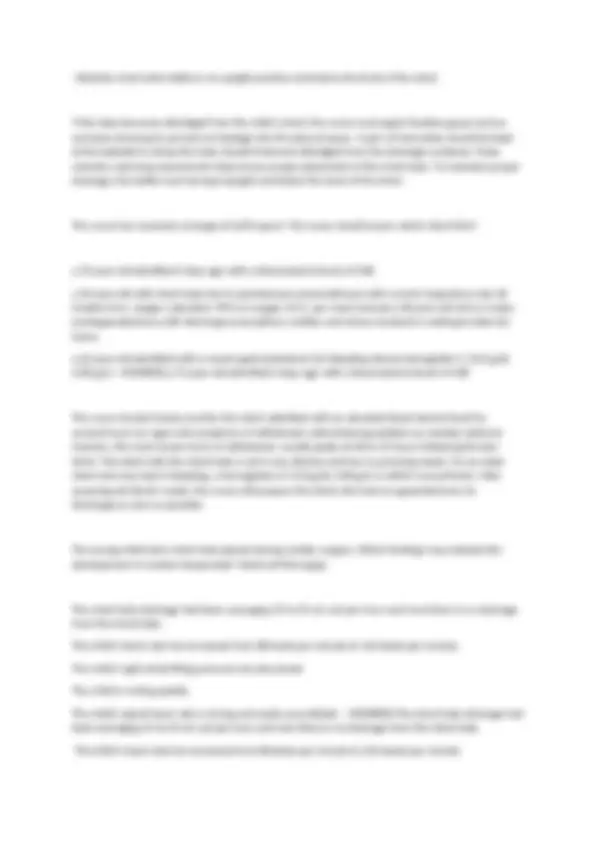
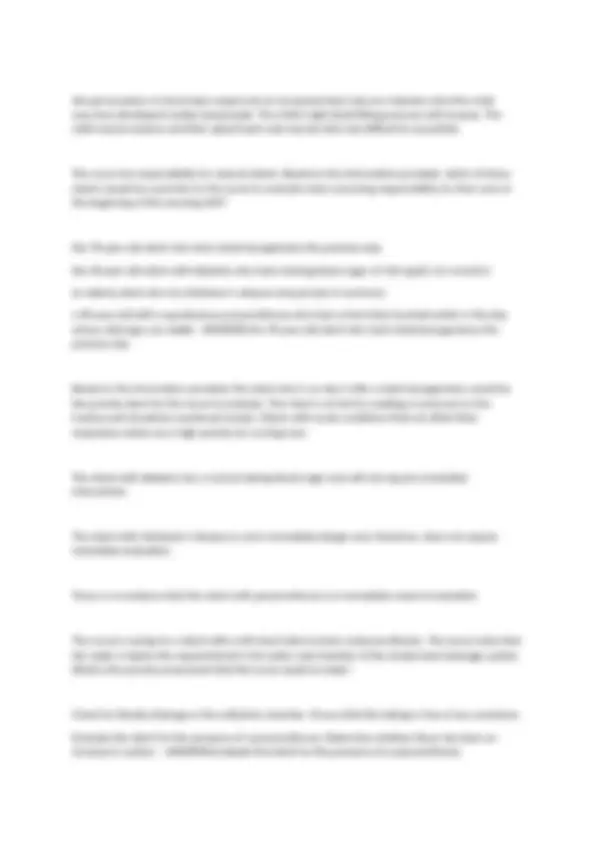
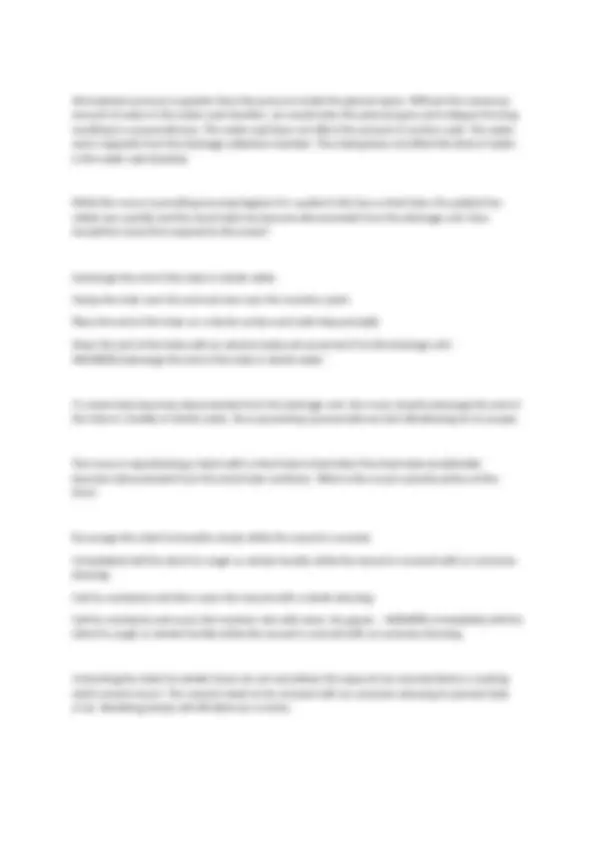
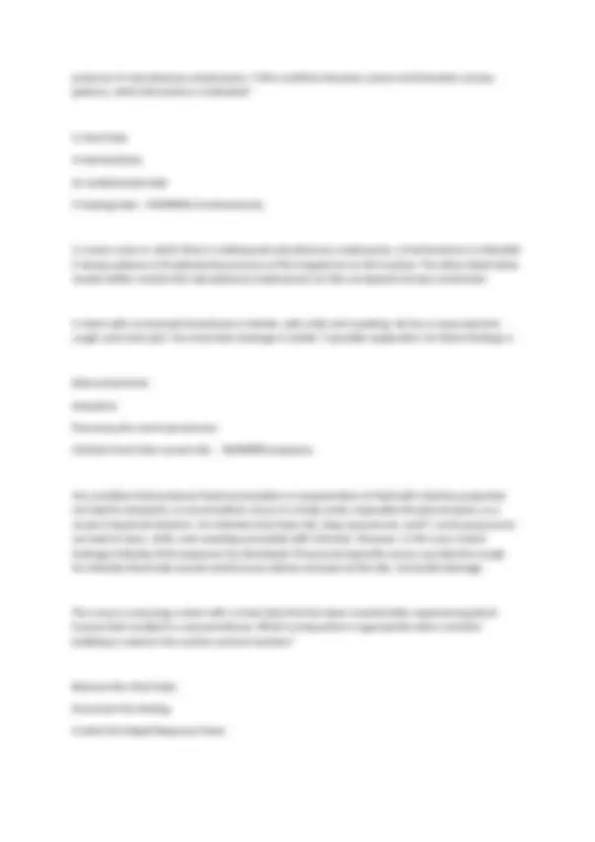
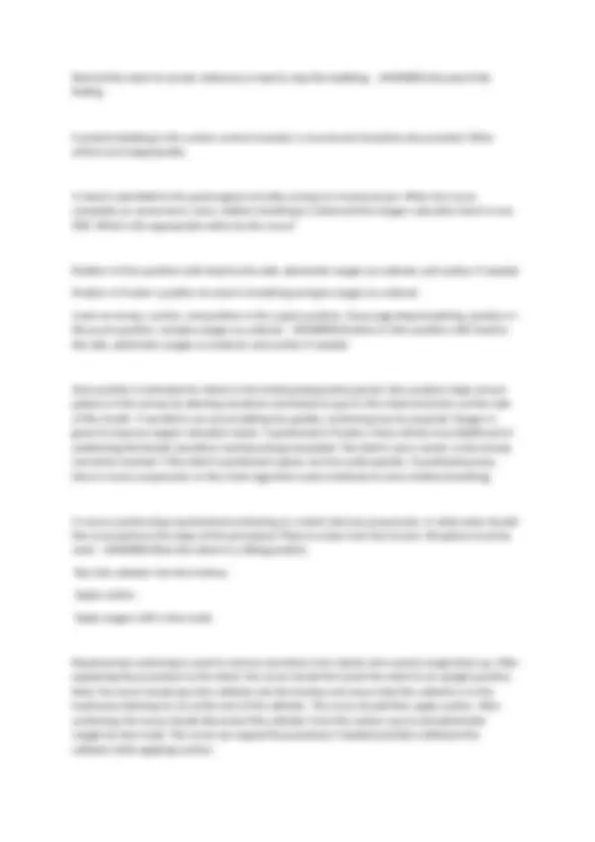
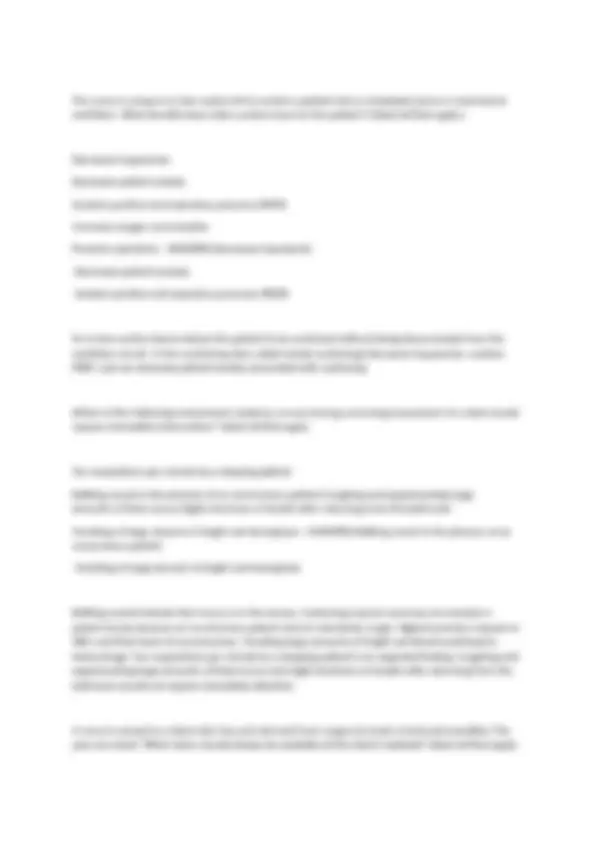
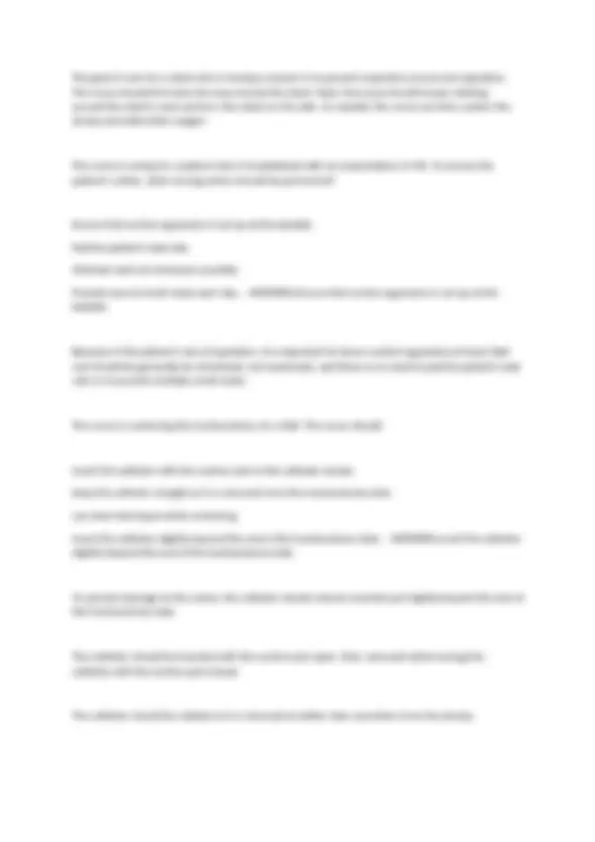
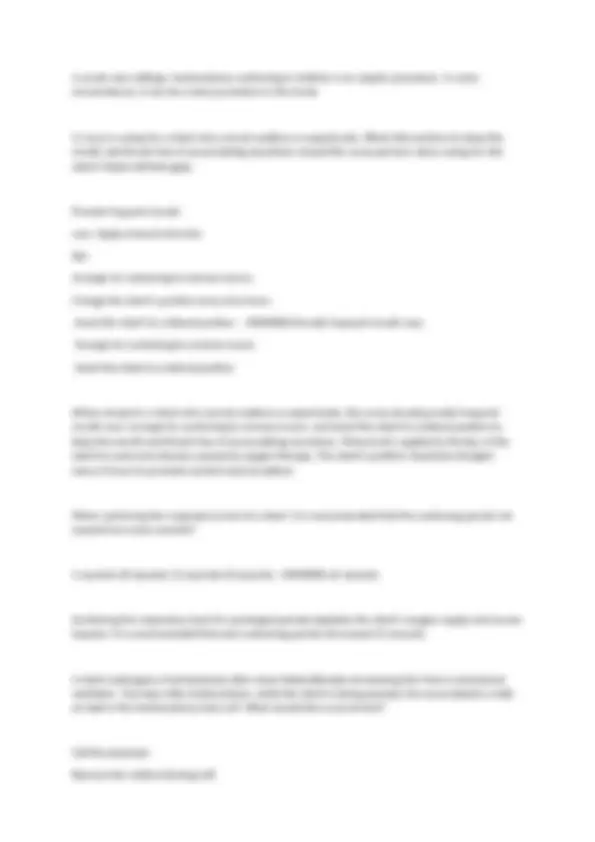
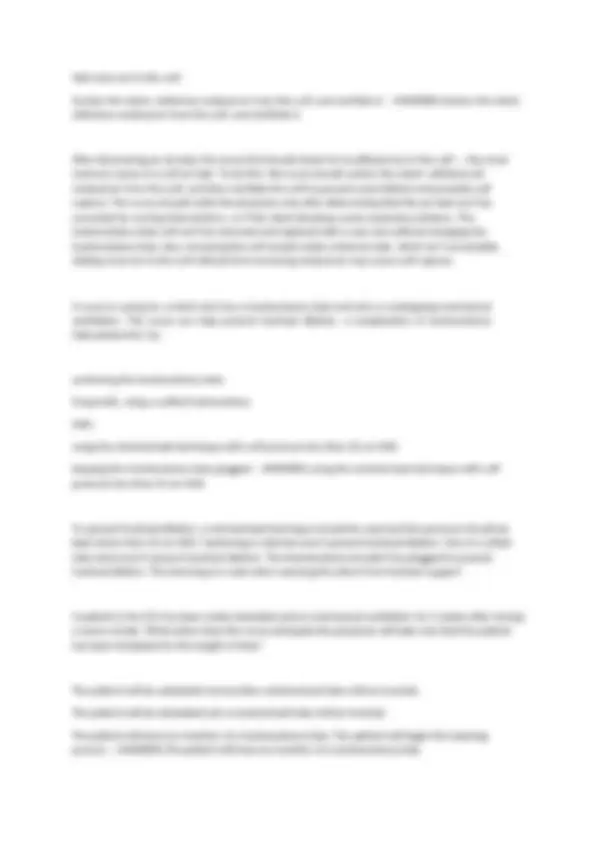
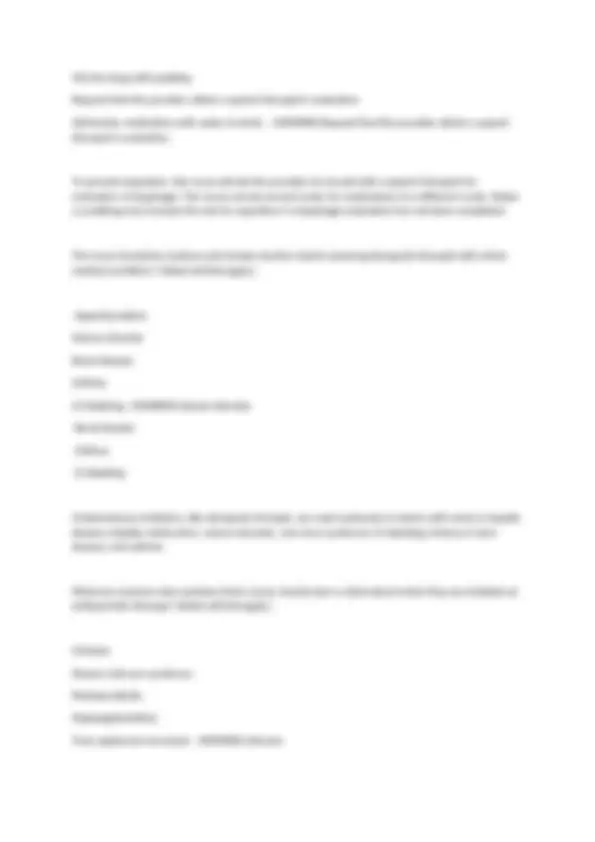
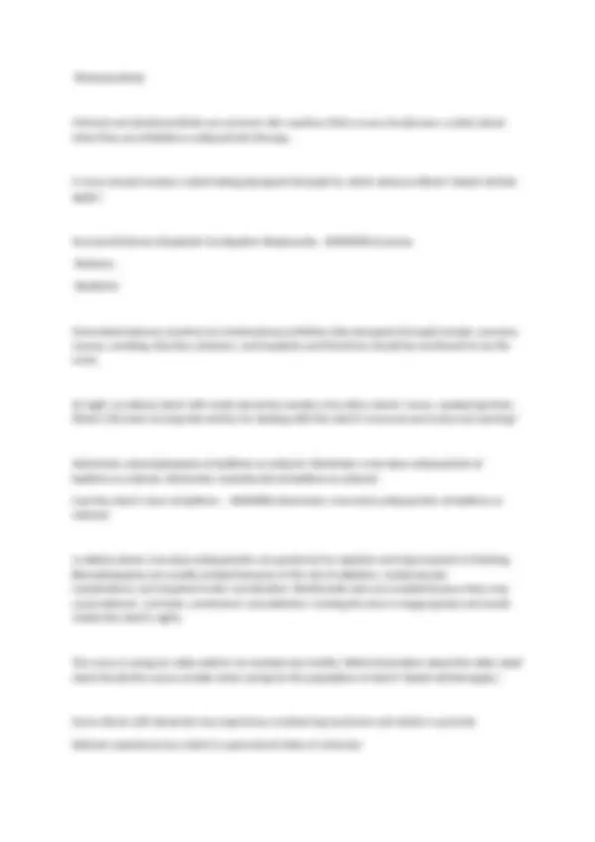
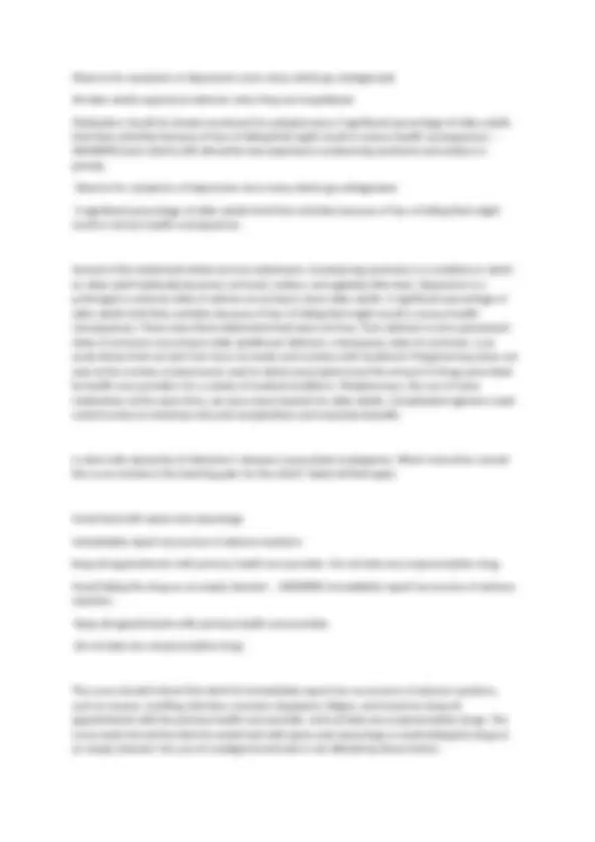
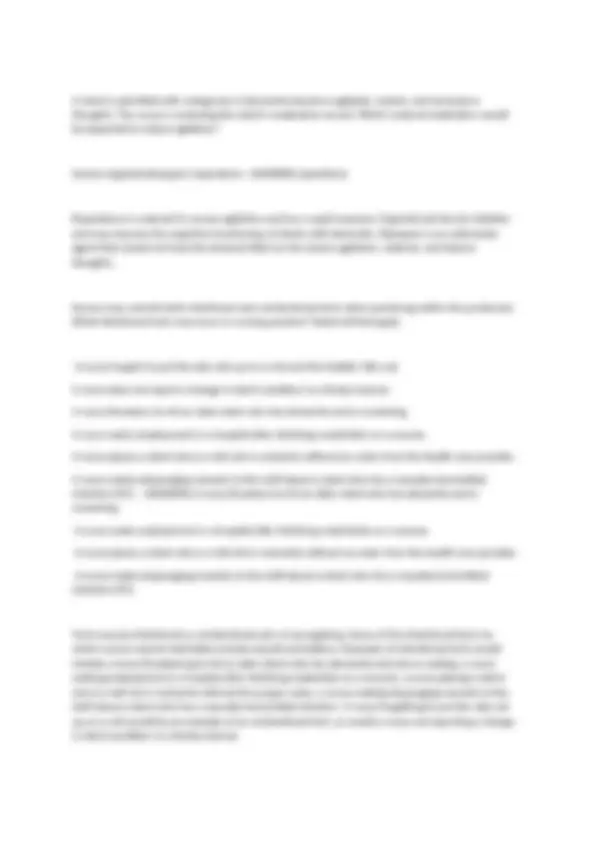
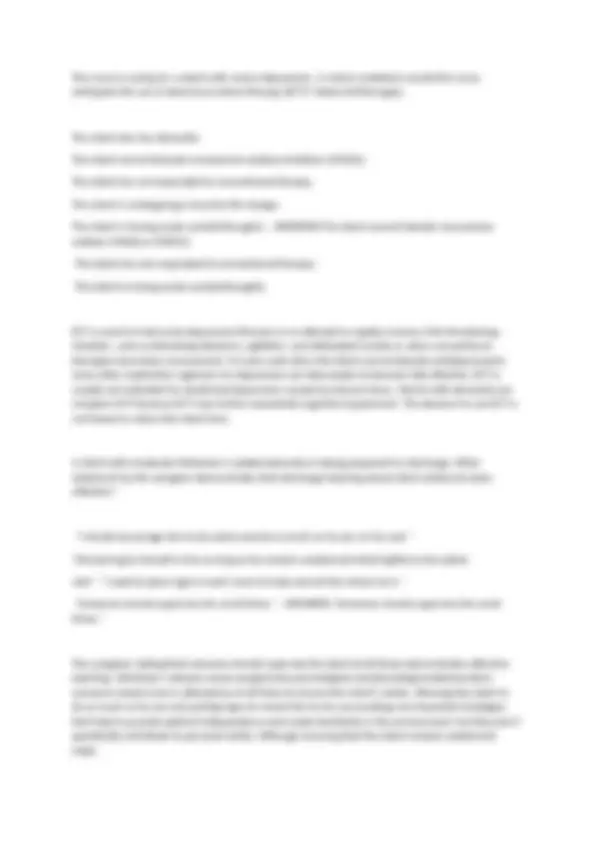
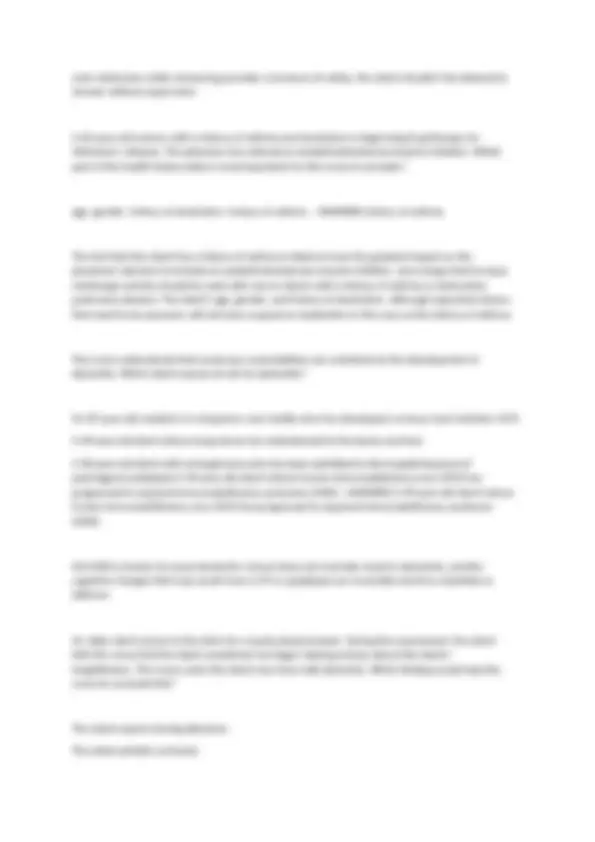
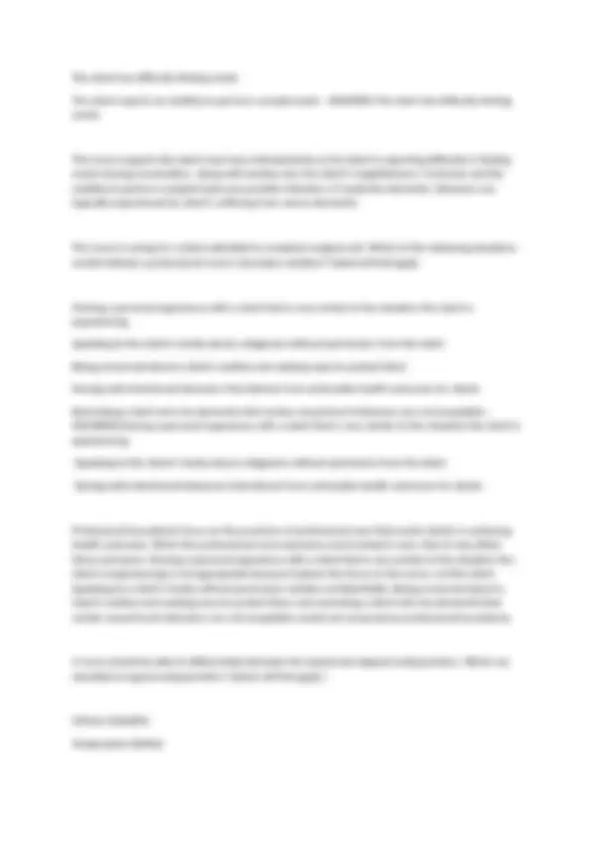
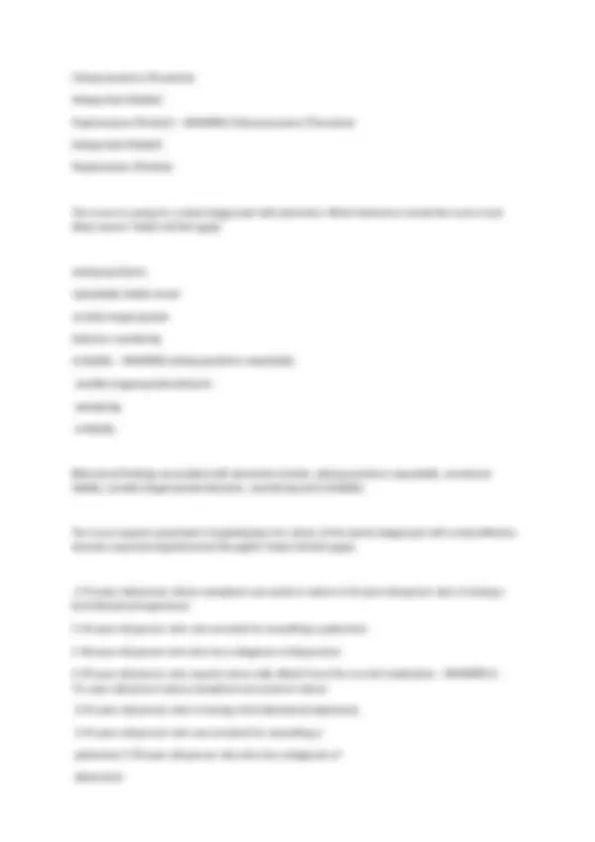
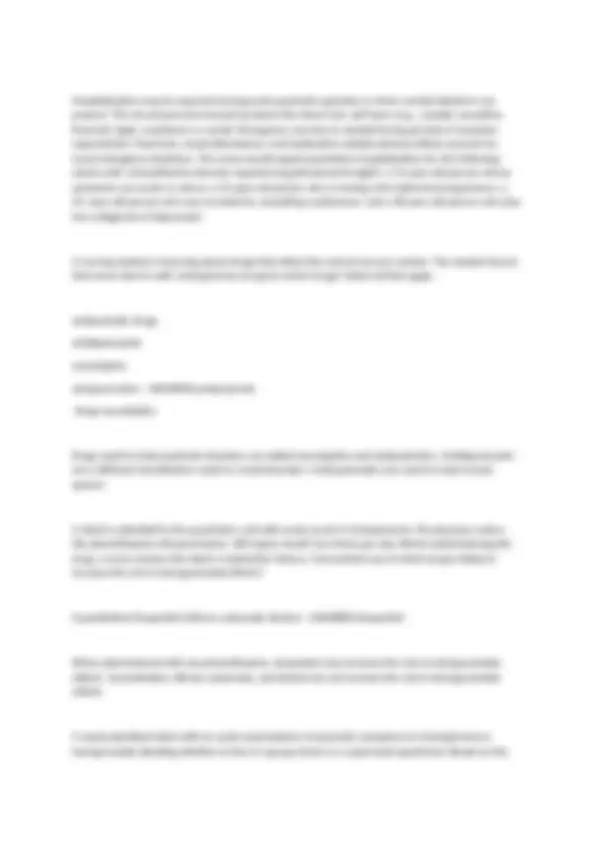
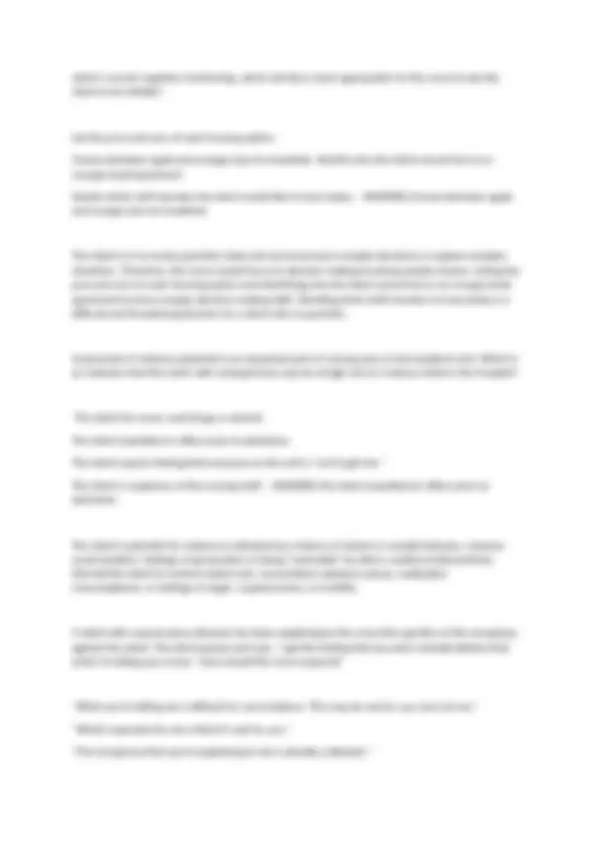

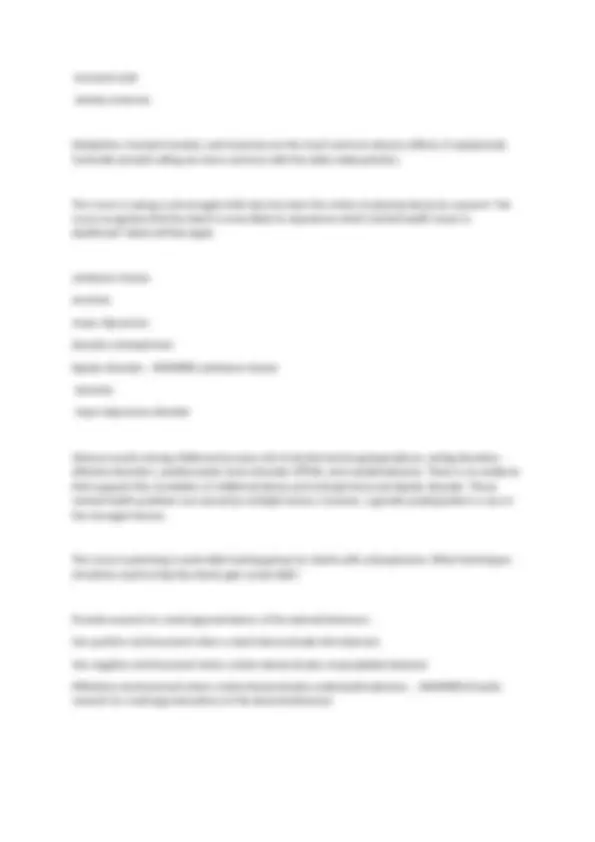
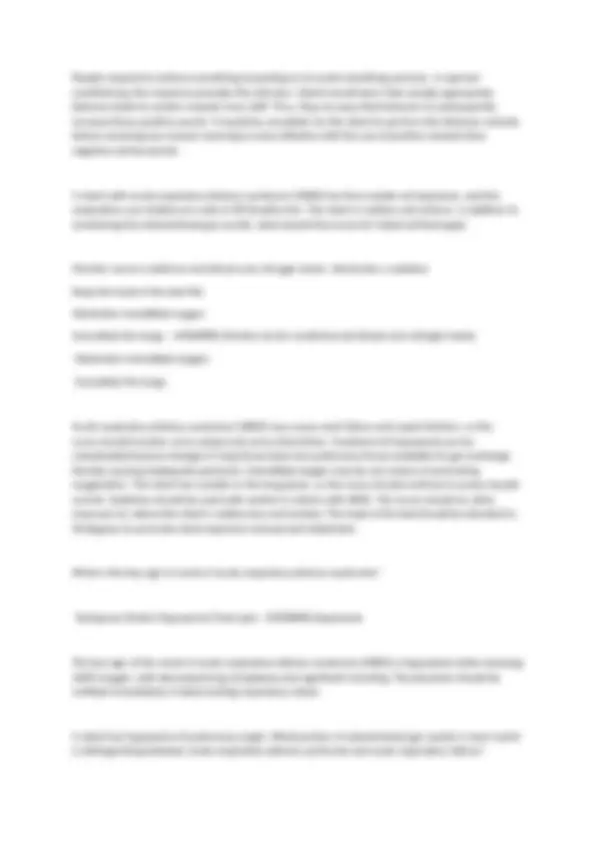

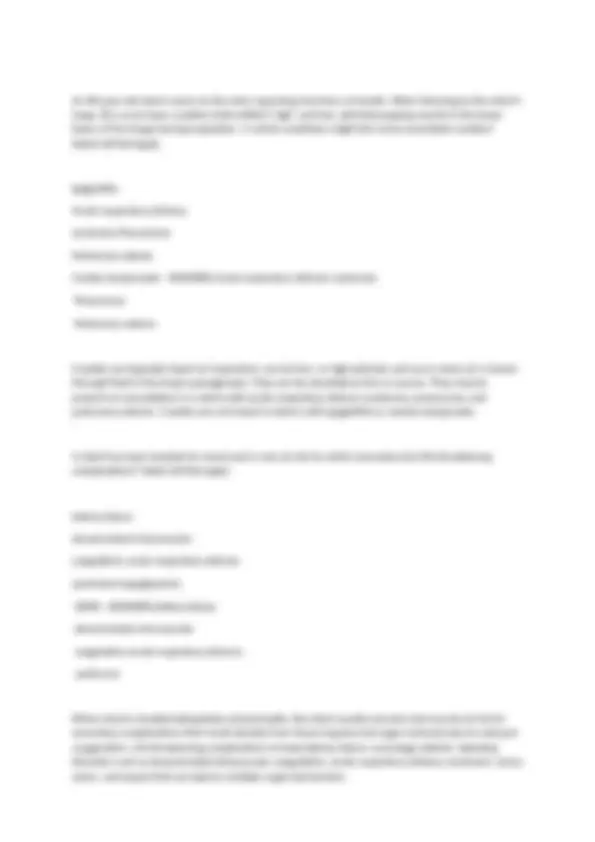
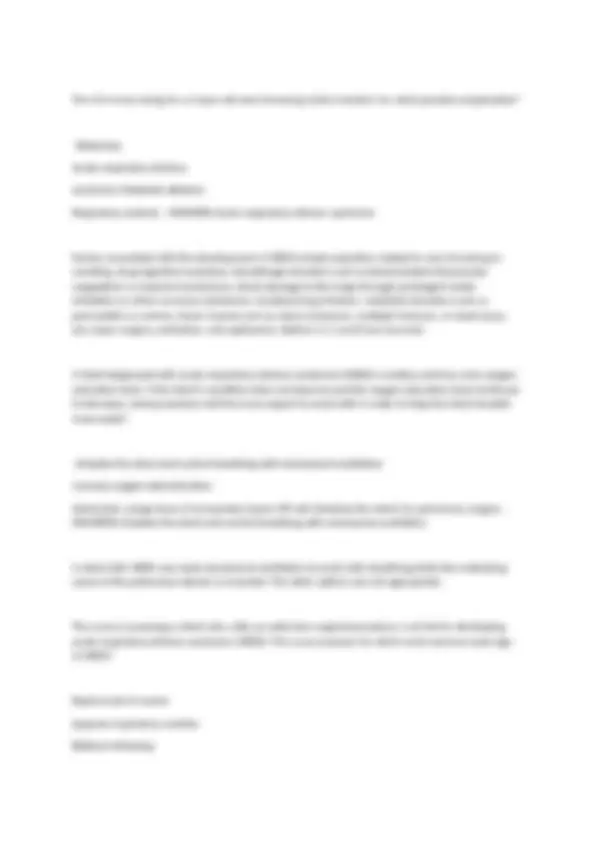
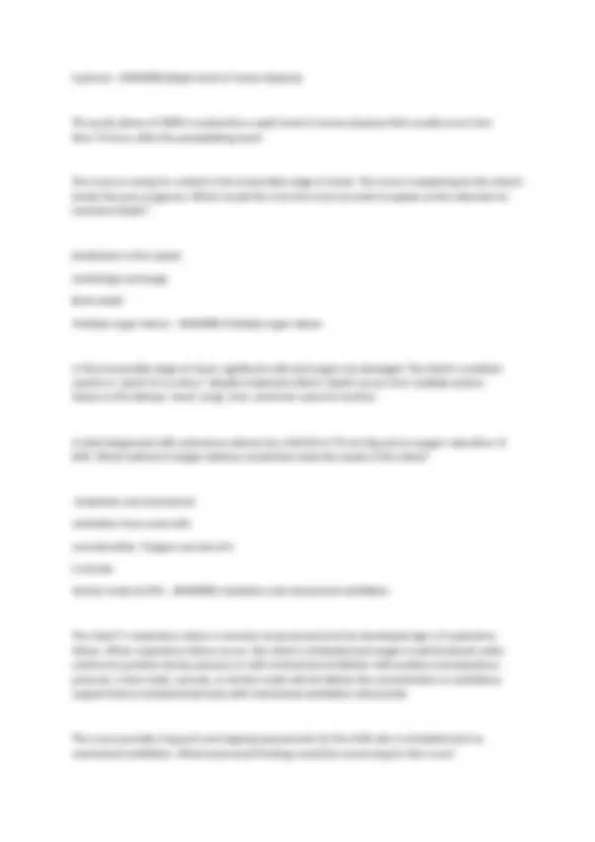
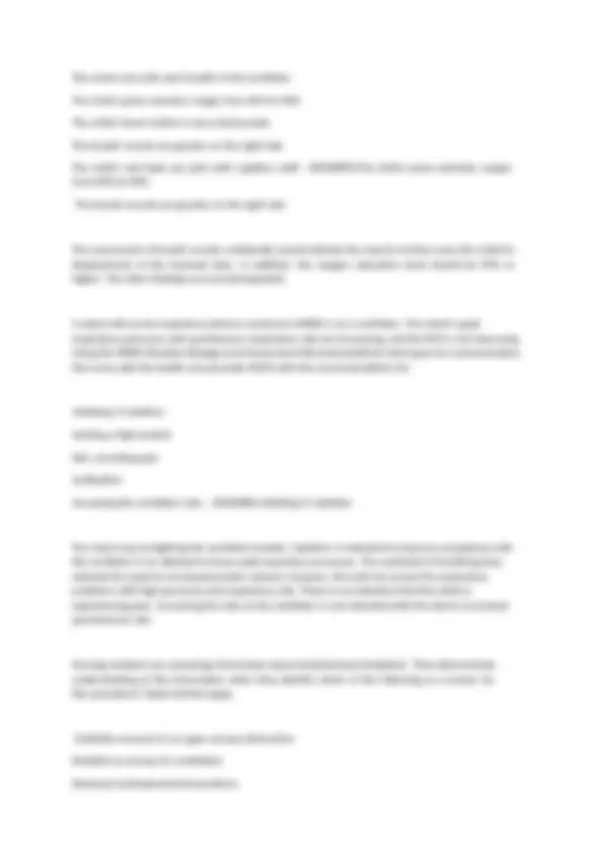
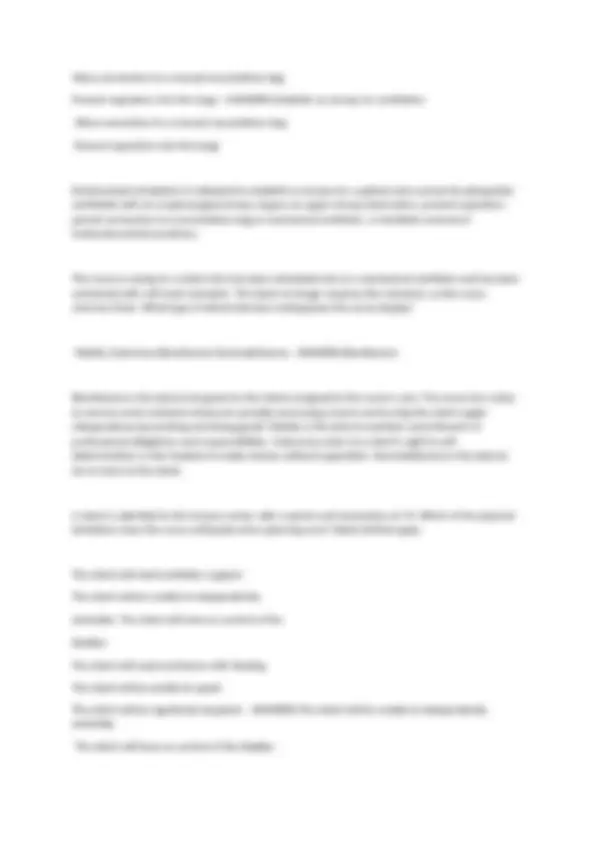

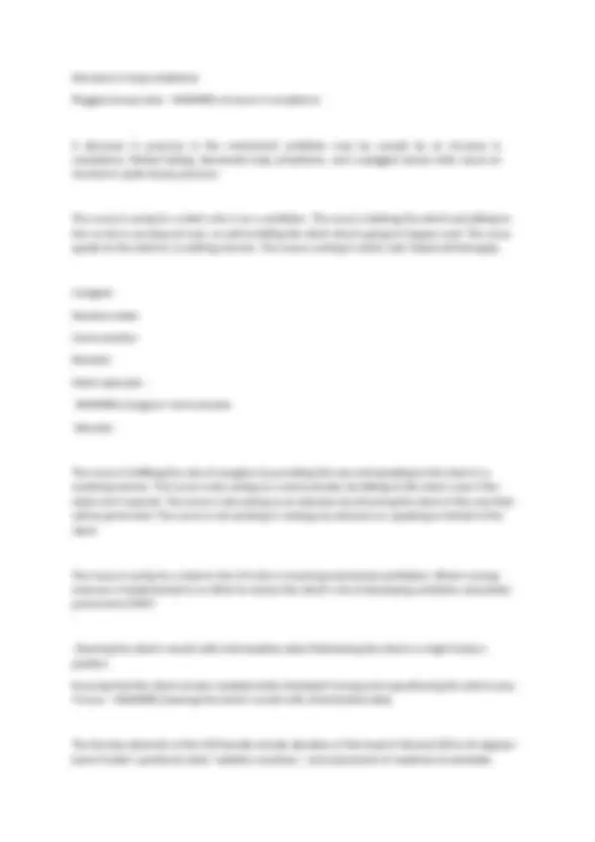
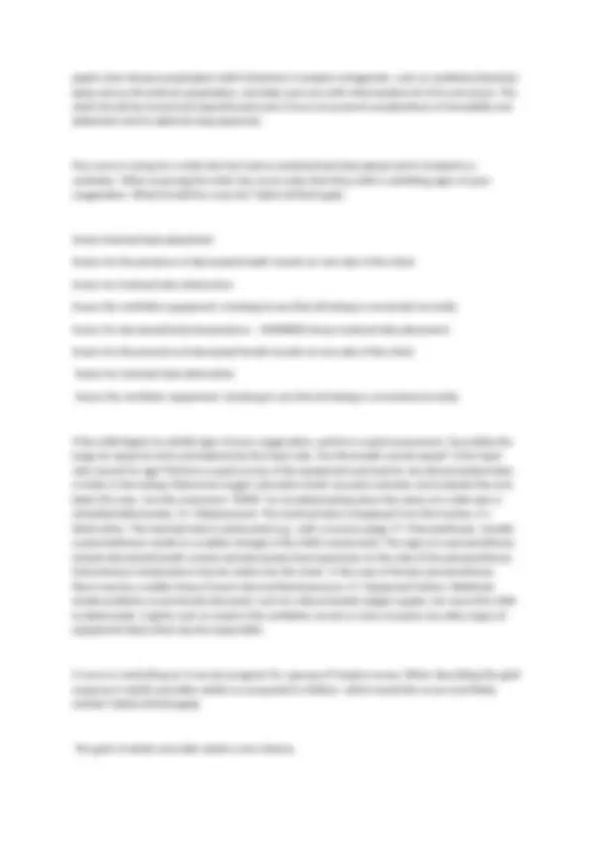
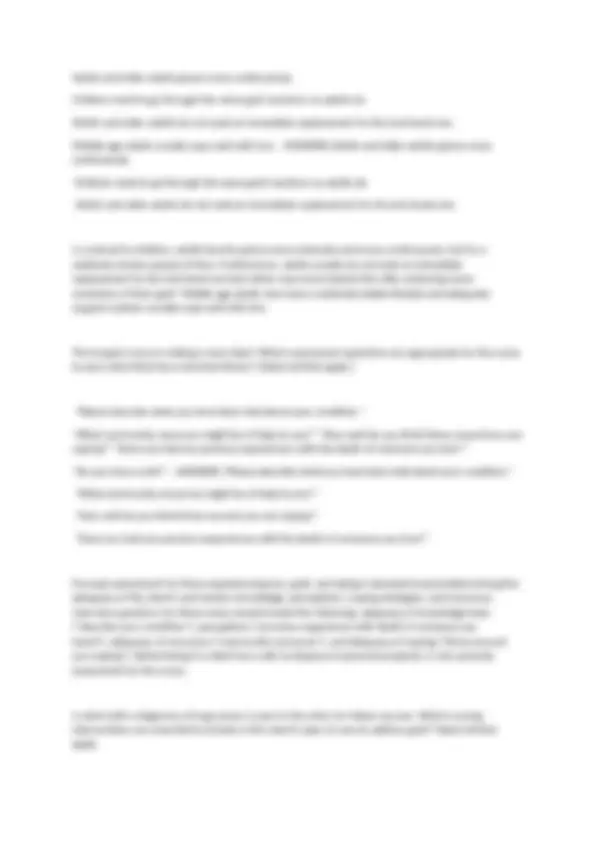
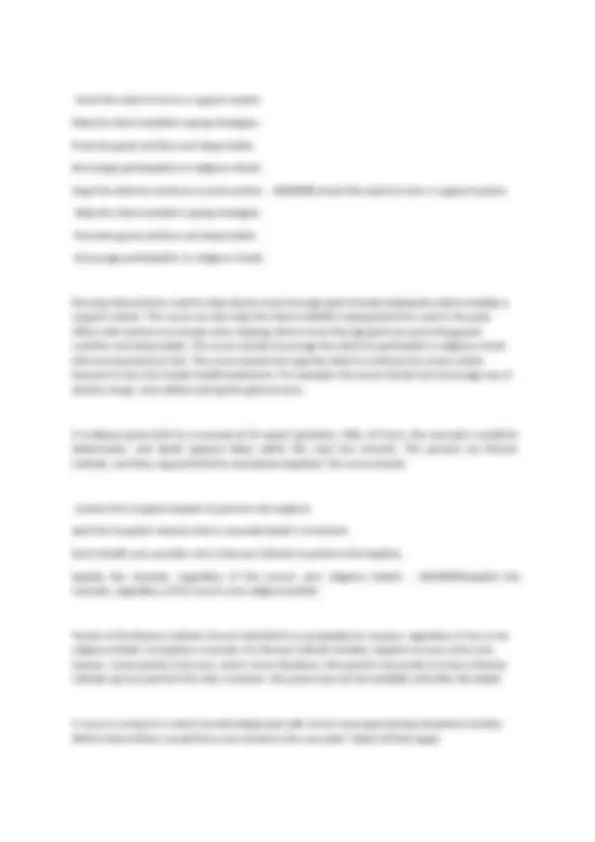
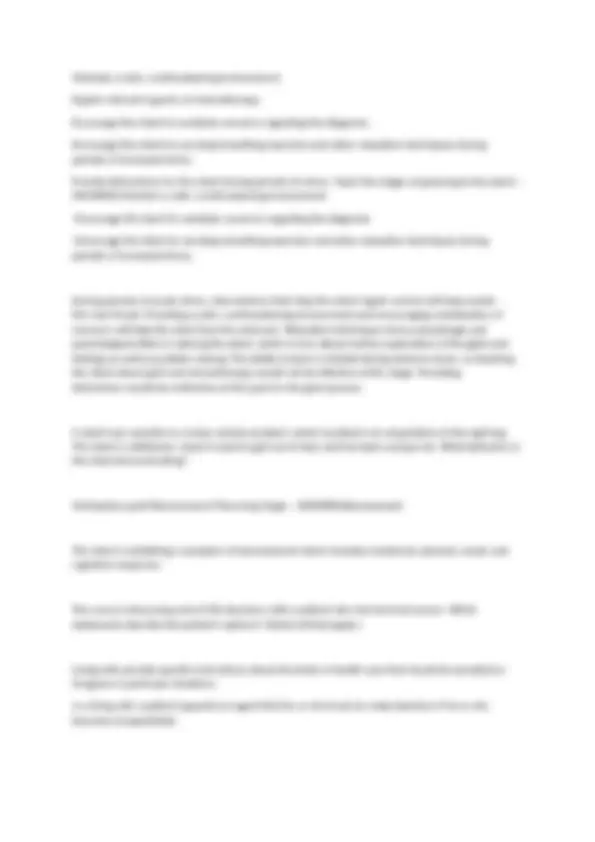
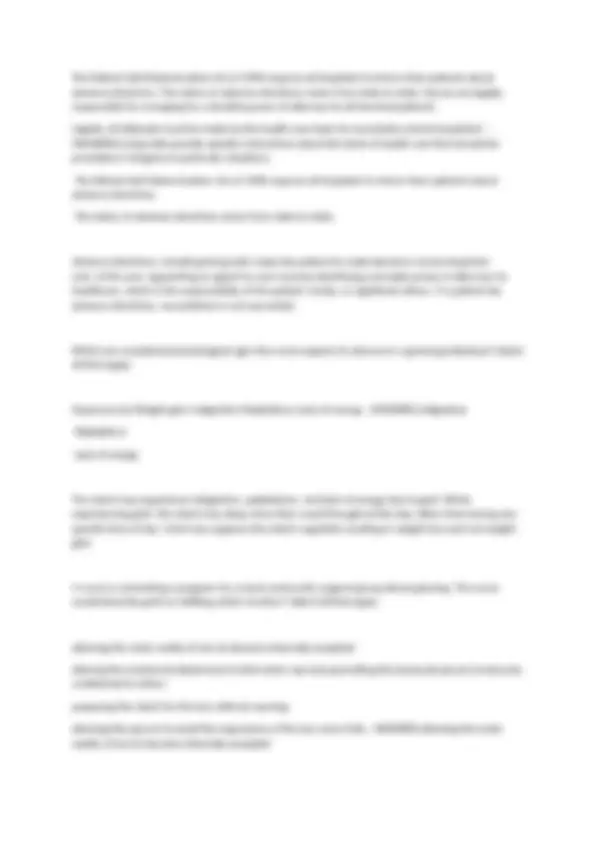
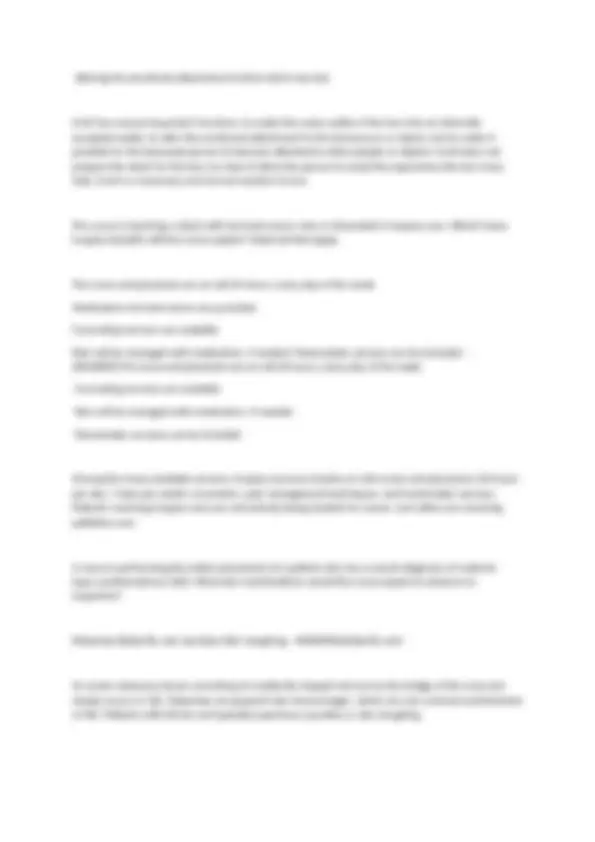
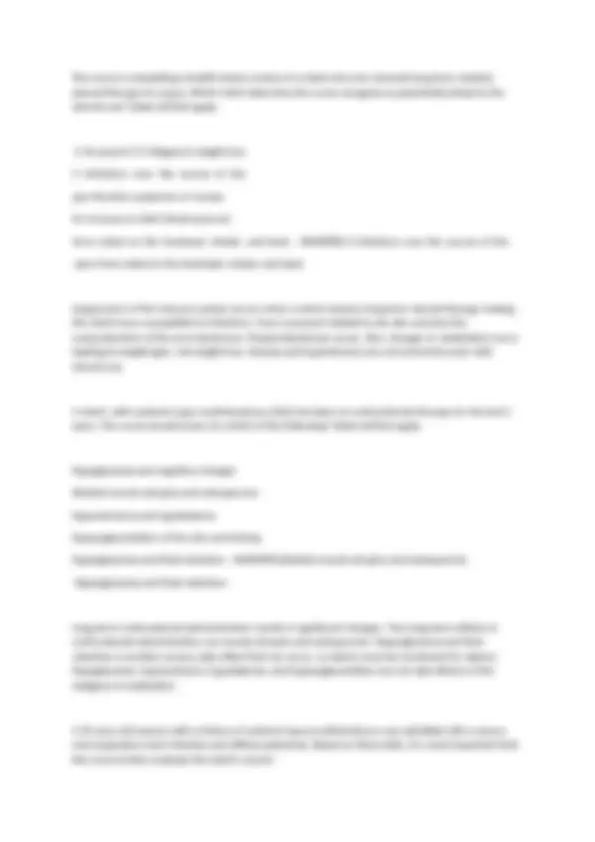
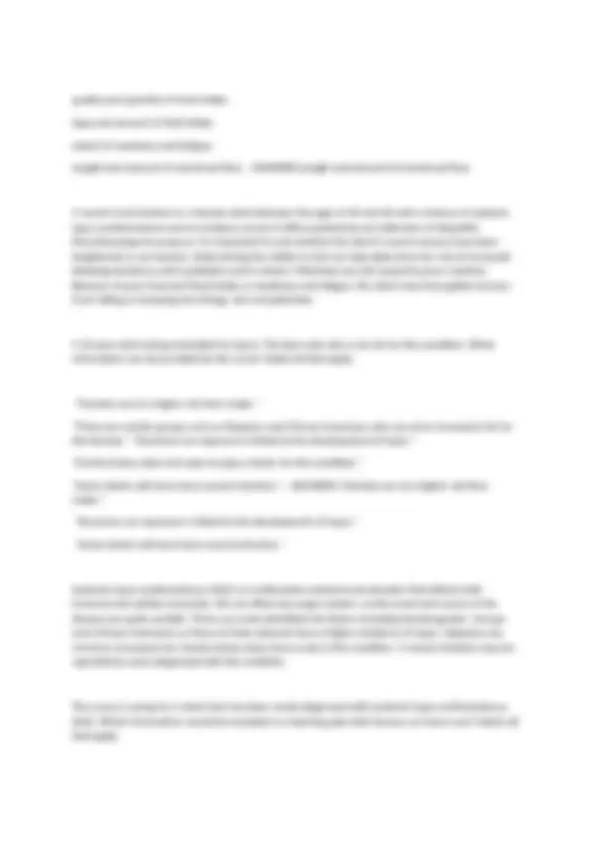
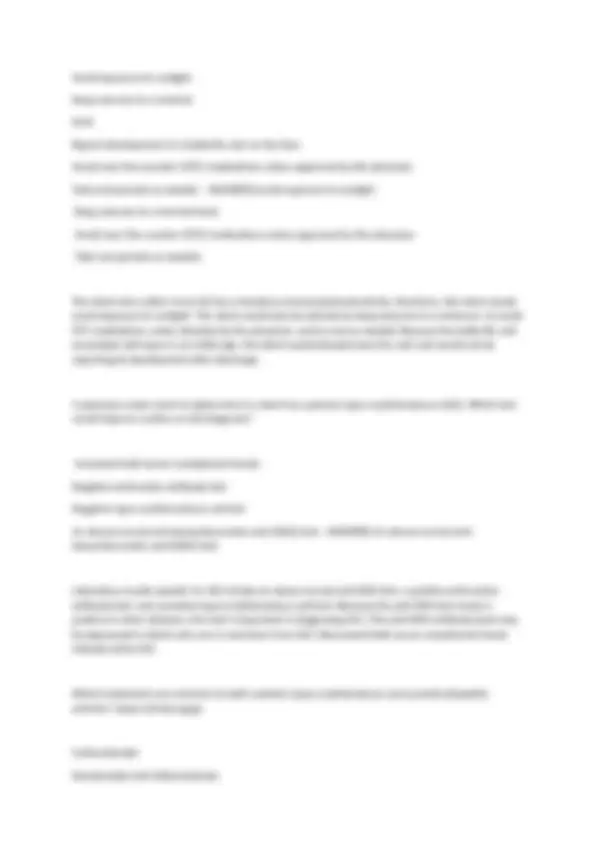
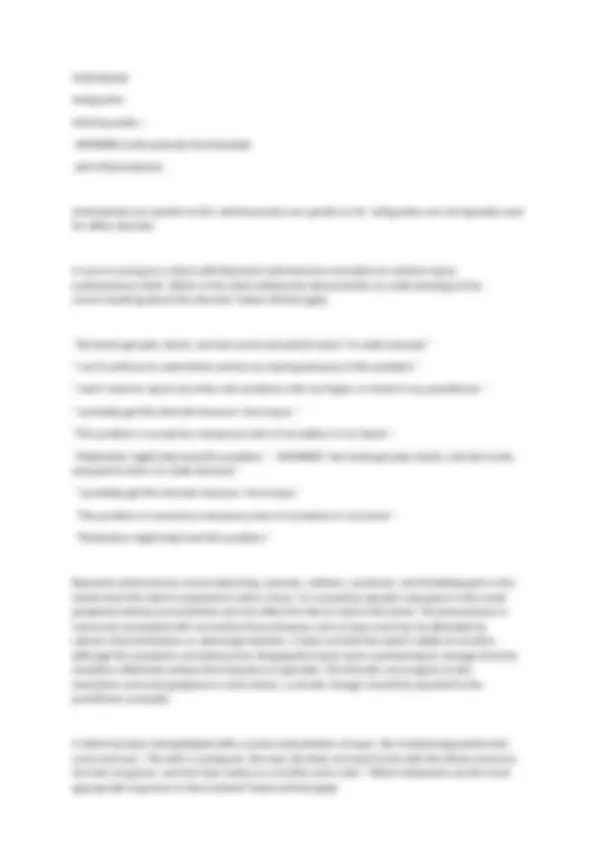
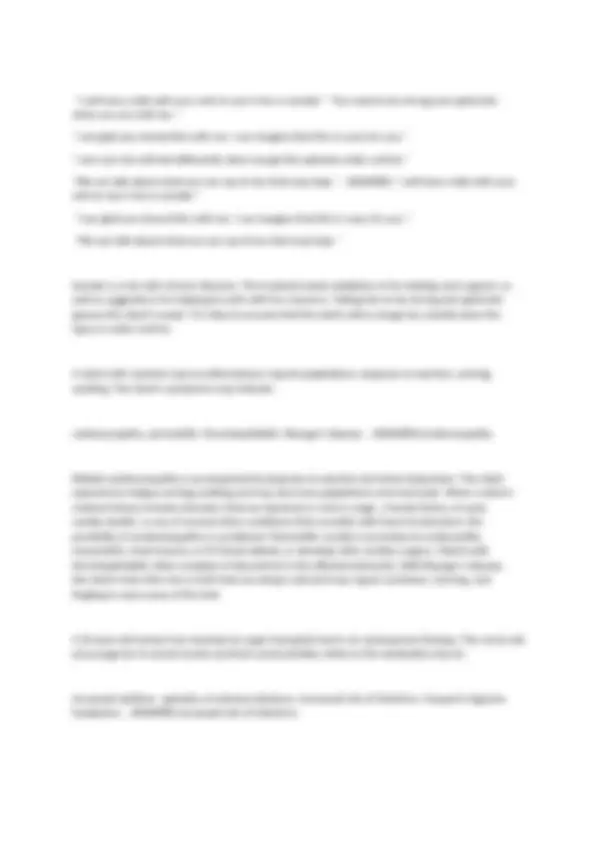
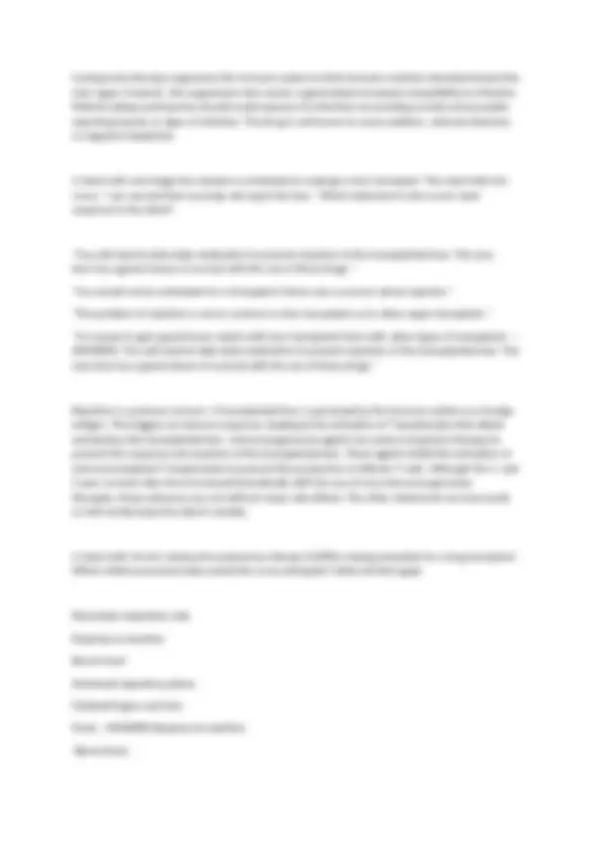
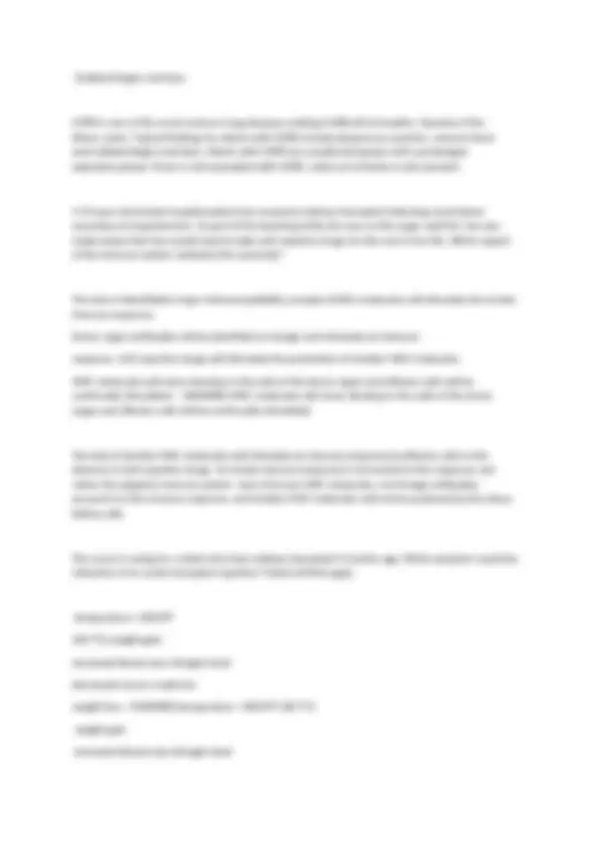
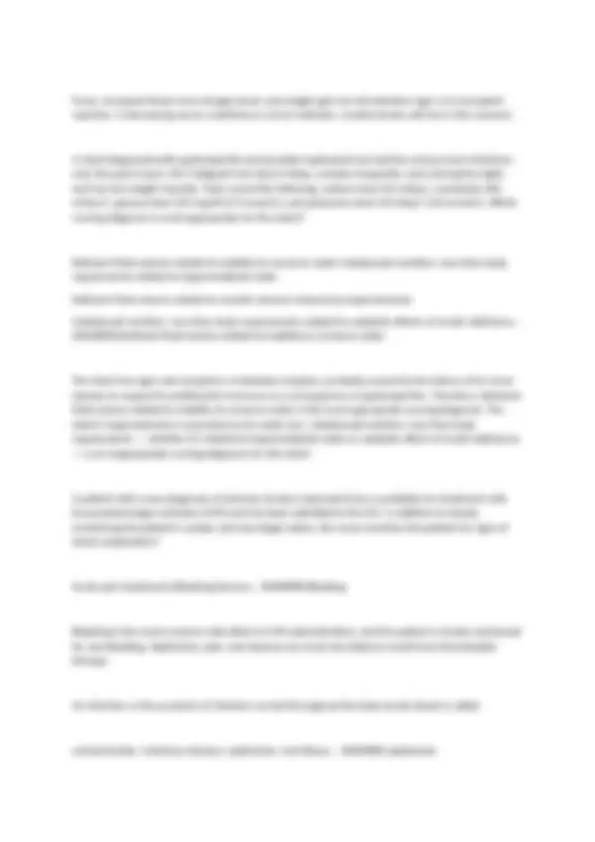
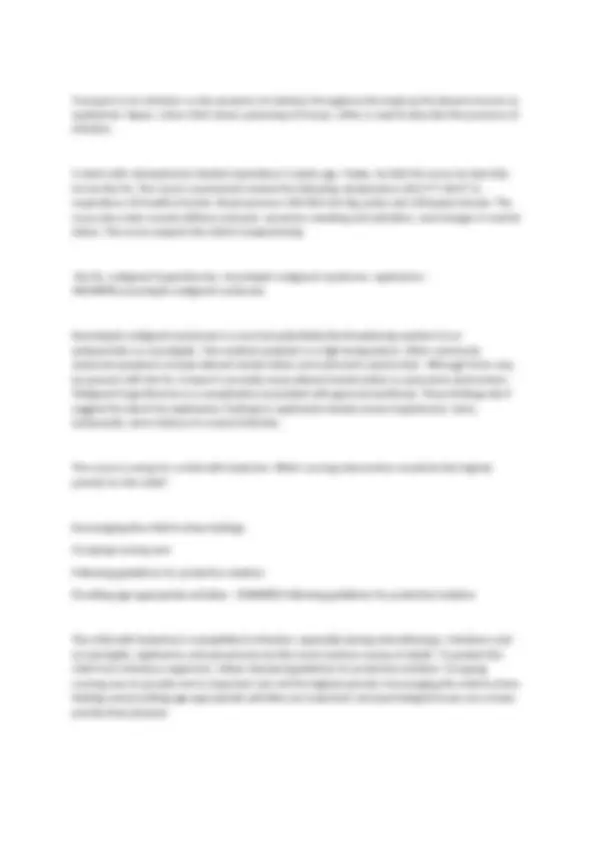
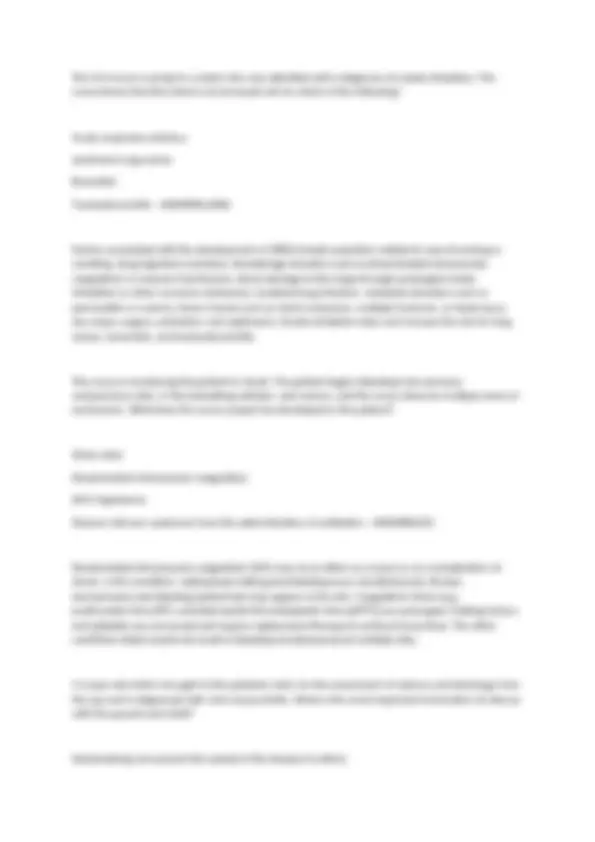
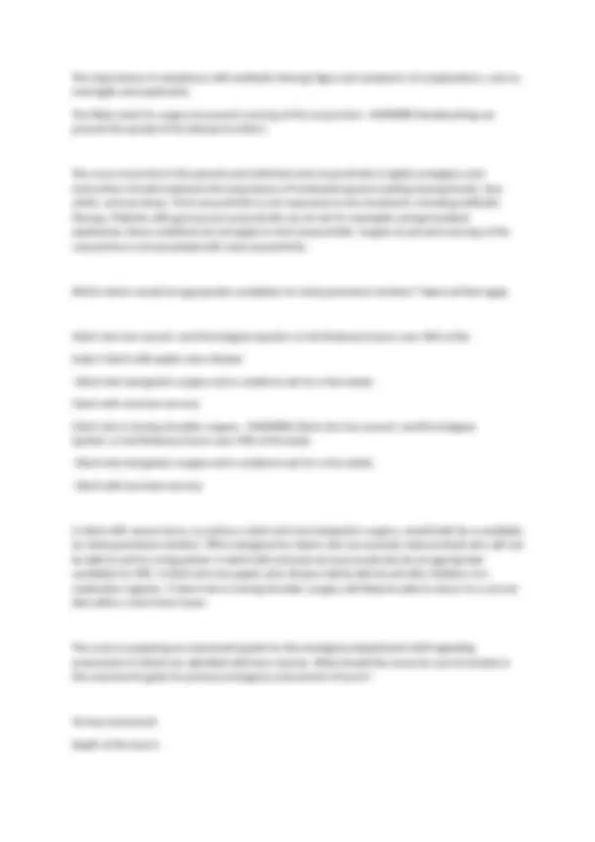
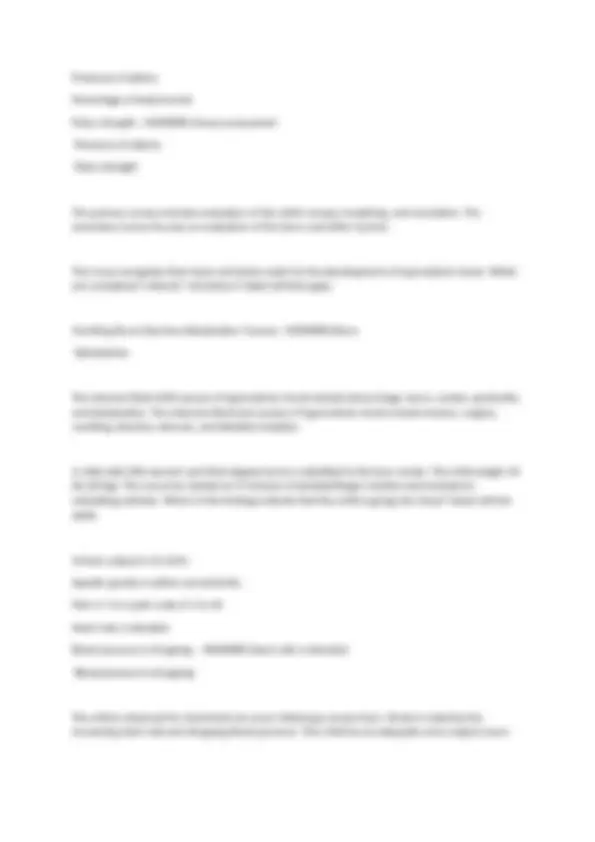
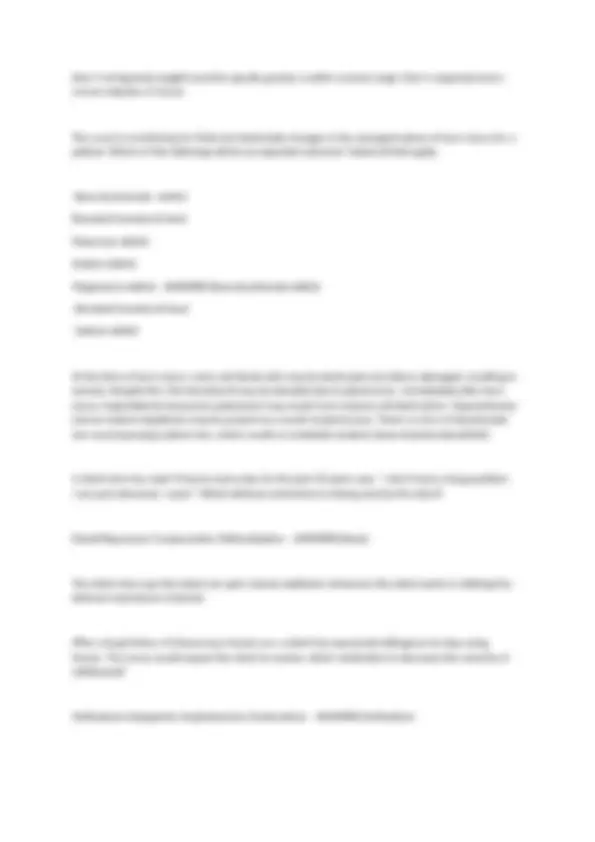
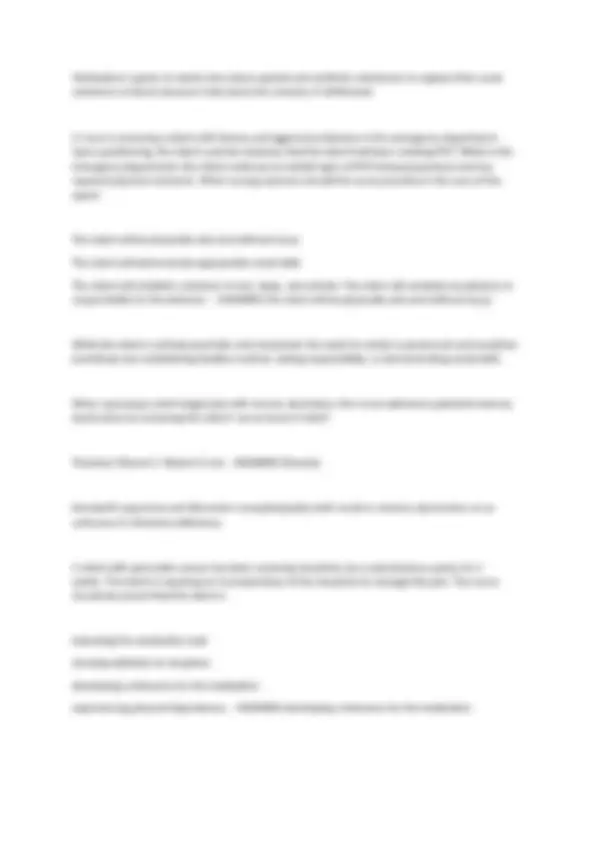
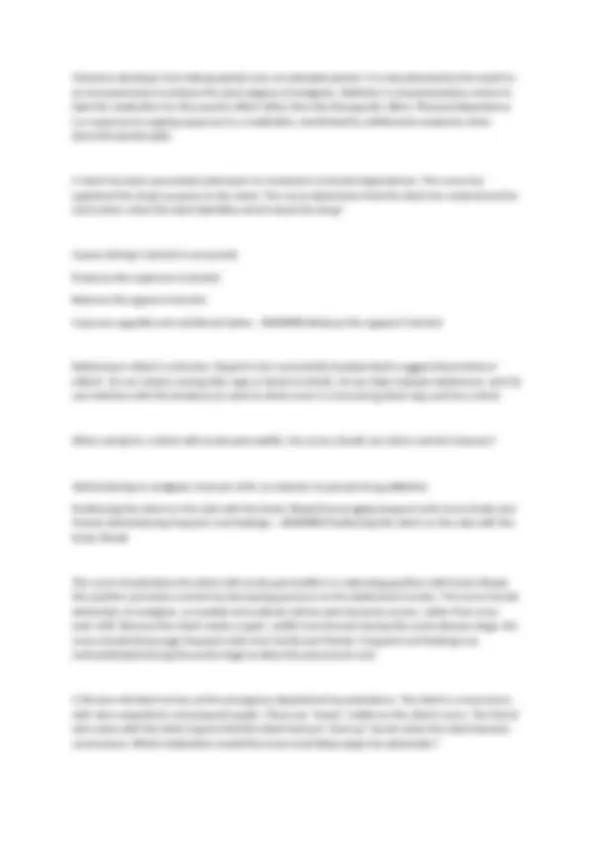
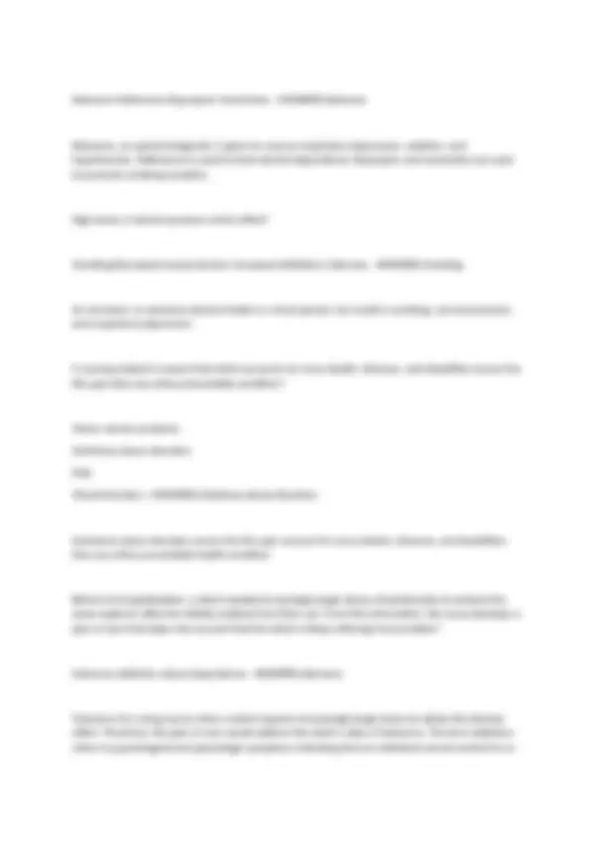
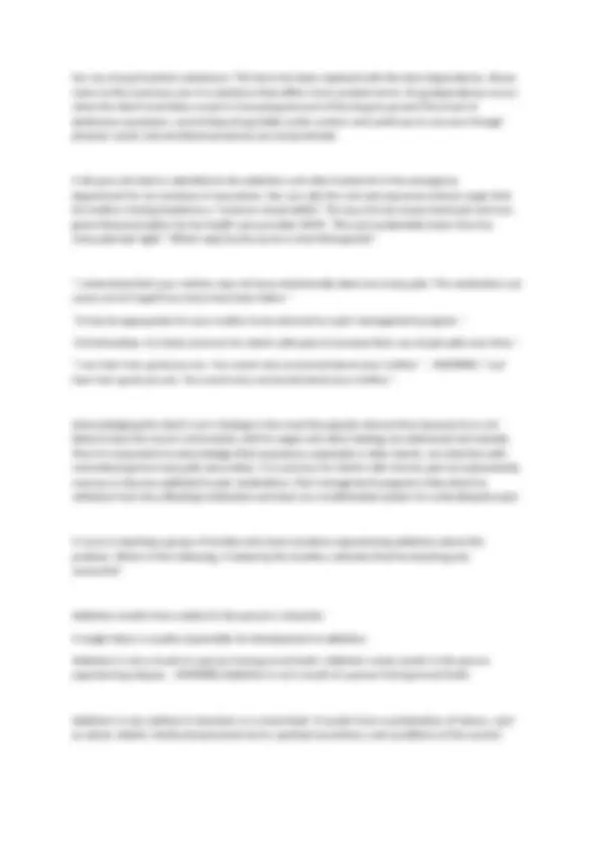
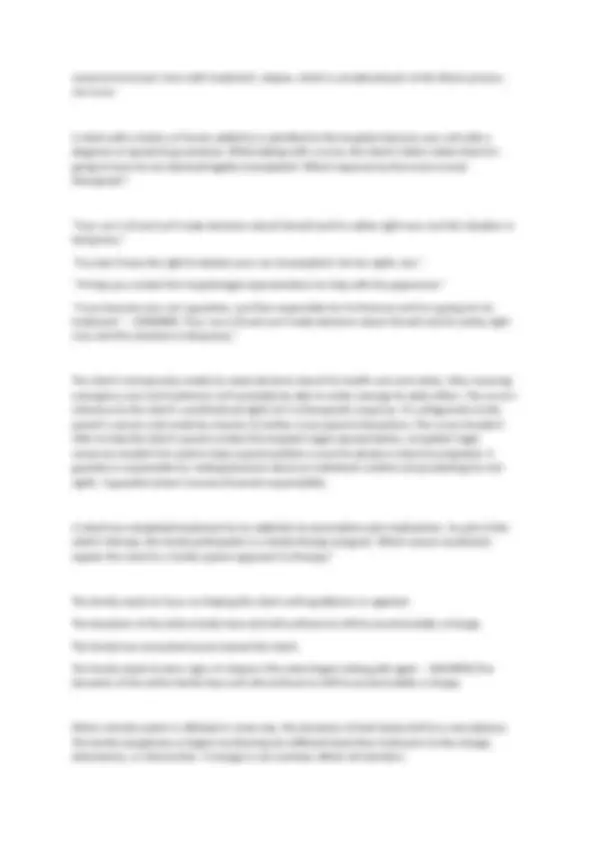
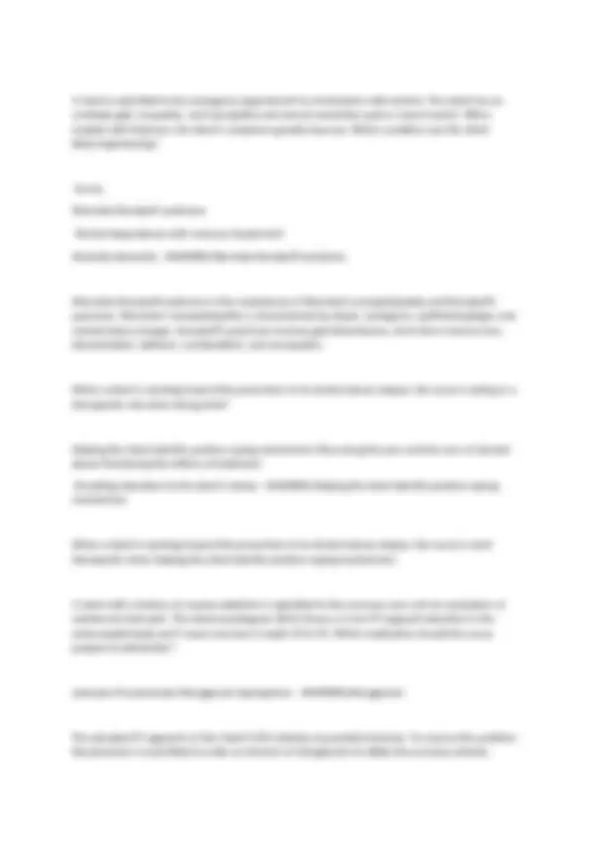
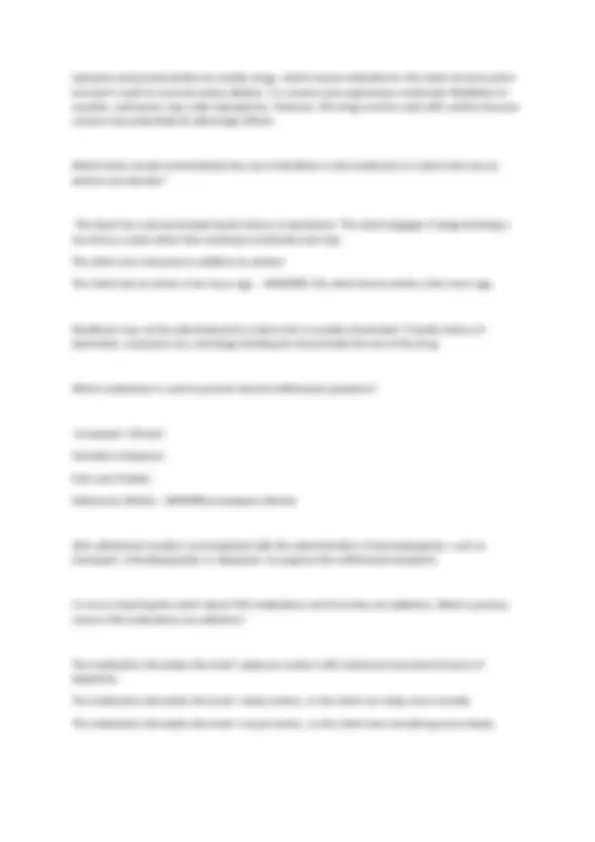
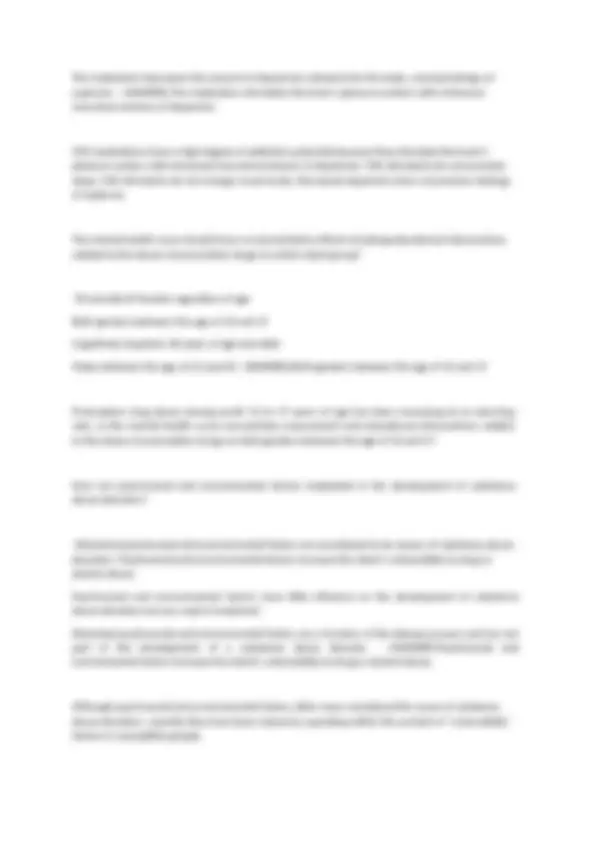
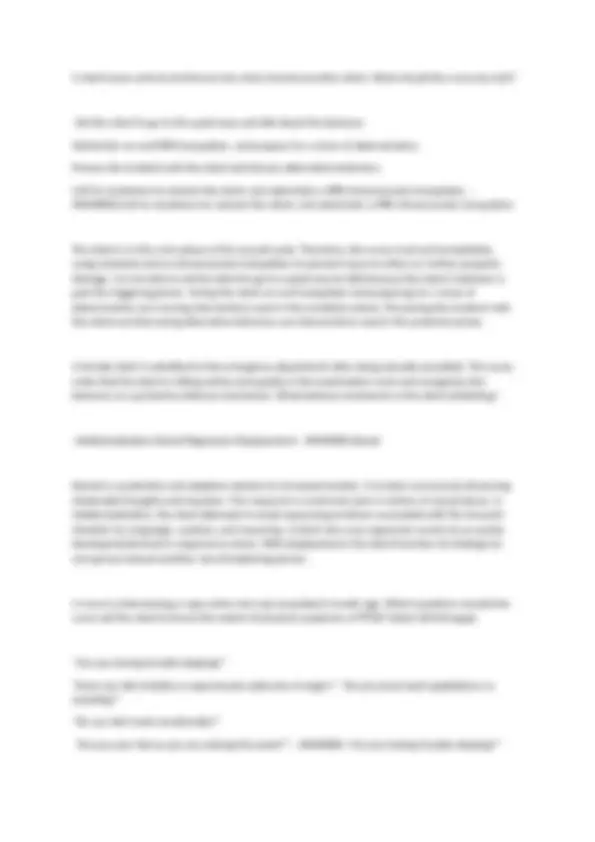
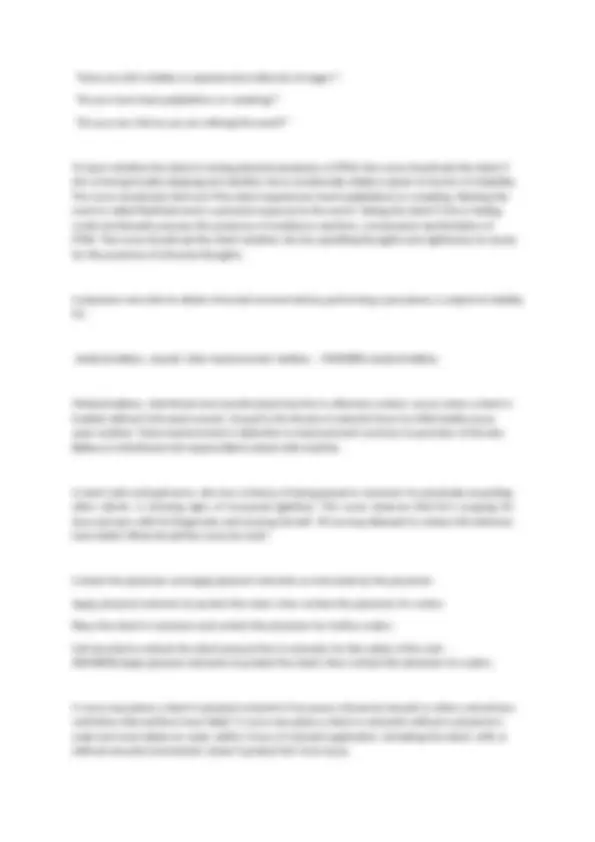
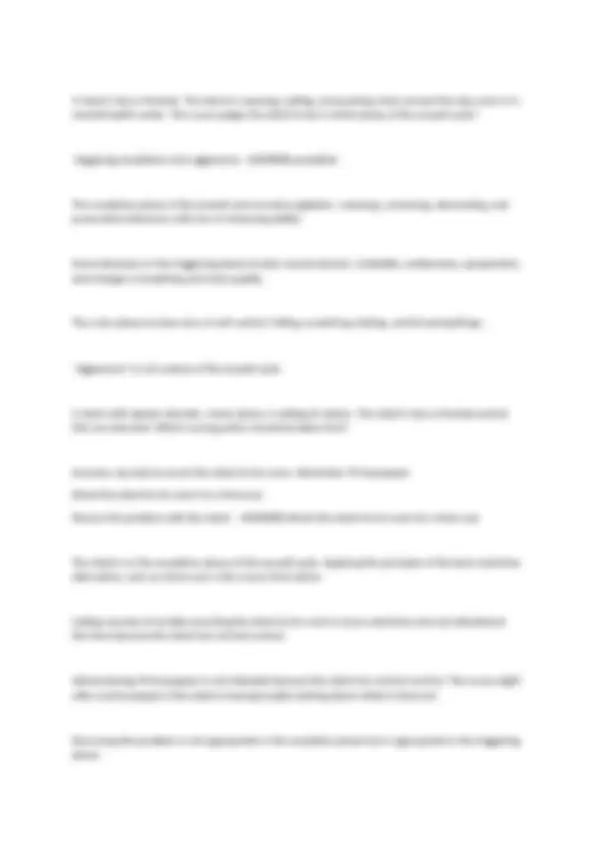
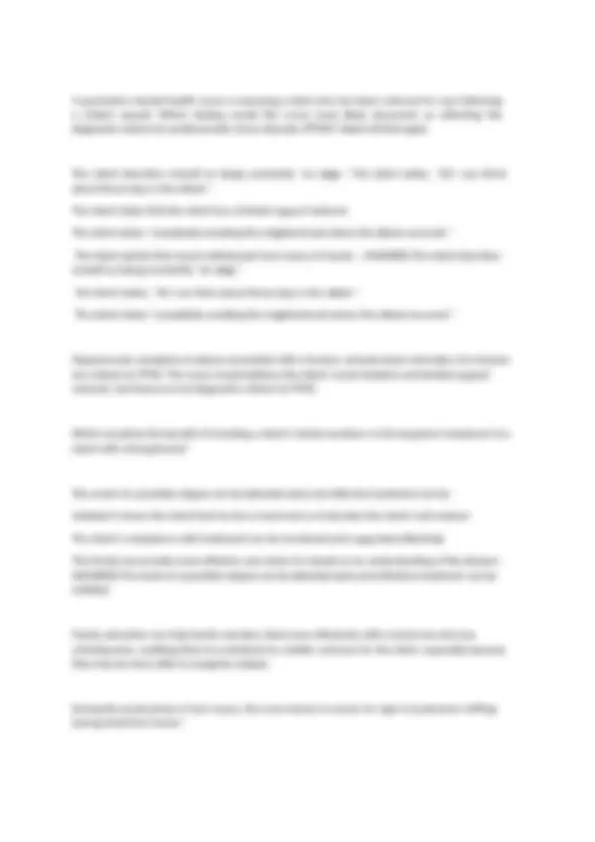



Study with the several resources on Docsity

Earn points by helping other students or get them with a premium plan


Prepare for your exams
Study with the several resources on Docsity

Earn points to download
Earn points by helping other students or get them with a premium plan
Community
Ask the community for help and clear up your study doubts
Discover the best universities in your country according to Docsity users
Free resources
Download our free guides on studying techniques, anxiety management strategies, and thesis advice from Docsity tutors
MED SURG FINAL EXAM WITH COMPLETE UPDATED SOLUTIONS .docx
Typology: Exams
1 / 70

This page cannot be seen from the preview
Don't miss anything!































































A client with unresolved hemothorax is febrile, with chills and sweating. He has a nonproductive cough and chest pain. His chest tube drainage is turbid. What should the nurse request in SBAR communication with the health care provider? Portable chest X-ray Antibiotic therapy Intubation and mechanical ventilation Arterial blood gasses - ANSWERS,Antibiotic therapy Any condition that produces fluid accumulation or sequestration of fluid with infective properties can lead to empyema, an accumulation of pus in a body cavity, especially the pleural space, as a result of bacterial infection. An infected chest tube site, lobar pneumonia, and P. carinii pneumonia can lead to fever, chills, and sweating associated with infection. With the symptoms of infection, antibiotic therapy would be recommended. Nothing in the question demonstrates a need for chest X-ray, intubation, or ABGs. A client has a chest tube inserted for the treatment of a pneumothorax. While turning in the bed, the client dislodges the tube and it is found in the bed. As the registered nurse is directing the health care team, place the actions of the registered nurse in the correct order. All options must be used. - ANSWERS,Apply an occlusive dressing over the puncture site Tape the dressing on three sides Direct the licensed practical/vocational nurse (LPN/VN) to notify the health care provider. Assess the client's respiratory status. Assess vital signs and await further medical orders A chest tube is a flexible, hollow tube placed through the chest wall and in to the pleural space. The chest tube is able to relieve trapped air and fluid. If a chest tube is dislodged and comes out, the nurse would immediately apply an occlusive dressing such as Vaseline gauze (many times kept in the client's room). The dressing is taped on three sides. The first action always focuses on the client. The nurse would direct another licensed nurse to immediately notify the health care provider. The nurse
would then assess the respiratory status. The nurse would obtain vital signs and await further orders. After having a lobectomy for lung cancer, a client receives a chest tube connected to a three- chamber chest drainage system. The nurse observes that the drainage system is functioning correctly when noting which of the following? Select all that apply. Fluctuations in the water-seal chamber occur when the client breathes. Crepitus forms at the chest tube insertion site. Intermittent bubbling occurs in the water-seal chamber. Gentle bubbling occurs in the suction control chamber. Drainage is collecting in the drainage chamber. - ANSWERS,Fluctuations in the water-seal chamber occur when the client breathes. Intermittent bubbling occurs in the water-seal chamber. Gentle bubbling occurs in the suction control chamber. Drainage is collecting in the drainage chamber. Fluctuations in the water-seal compartment (or tidal movements) indicate normal function of the system as the pressure in the tubing changes with the client's respirations. There also should be intermittent bubbling in the water-seal chamber, indicating that air is being removed from the pleural cavity by the system. Gentle bubbling in the suction control chamber indicates that the proper suction level has been reached. Drainage is expected to collect in the drainage chamber after a lobectomy. Crepitus indicates that air is leaking into the subcutaneous tissues. The physician should be notified of this finding. The nurse is planning care for a child with a pneumothorax. The nurse adds the nursing diagnosis, "Risk for injury related to potential dislodgement of chest tube" to the care plan. When writing the care plan, what should the nurse be sure to include as interventions? Keep dry gauze at the bedside Ensure a pair of hemostats are at the bedside Monitor pulse oximetry readings Assess lungs as directed by the physician or as the client's condition warrants Maintain chest tube bottle in an upright position and below the level of the chest - ANSWERS,Ensure a pair of hemostats are at the bedside Monitor pulse oximetry readings Assess lungs as directed by the physician or as the client's condition warrants
Abrupt cessation of chest tube output and an increased heart rate are indicators that the child may have developed cardiac tamponade. The child's right atrial filling pressure will increase. The child may be anxious and their apical heart rate may be faint and difficult to auscultate. The nurse has responsibility for several clients. Based on the information provided, which of these clients would be a priority for the nurse to evaluate when assuming responsibility for their care at the beginning of the evening shift? the 70-year-old client who had a total laryngectomy the previous day the 40-year-old client with diabetes who had a fasting blood sugar of 110 mg/dL (6.1 mmol/L) an elderly client who has Alzheimer's disease and periods of confusion a 20-year-old with a spontaneous pneumothorax who had a chest tube inserted earlier in the day whose vital signs are stable - ANSWERS,the 70-year-old client who had a total laryngectomy the previous day Based on the information provided, the client who is on day 1 after a total laryngectomy would be the priority client for the nurse to evaluate. This client is at risk for swelling or pressure on the trachea and should be monitored closely. Clients with acute conditions that can affect their respiratory status are a high priority for nursing care. The client with diabetes has a normal fasting blood sugar and will not require immediate intervention. The client with Alzheimer's disease is not in immediate danger and, therefore, does not require immediate evaluation. There is no evidence that the client with pneumothorax is in immediate need of evaluation. The nurse is caring for a client with a left chest tube to drain a pleural effusion. The nurse notes that the water is below the required level in the water seal chamber of the closed chest drainage system. What is the priority assessment that the nurse needs to make? Check for bloody drainage in the collection chamber. Ensure that the tubing is free of any occlusions. Evaluate the client for the presence of a pneumothorax. Determine whether there has been an increase in suction. - ANSWERS,Evaluate the client for the presence of a pneumothorax.
Atmospheric pressure is greater than the pressure inside the pleural space. Without the necessary amount of water in the water seal chamber, air would enter the pleural space and collapse the lung, resulting in a pneumothorax. The water seal does not affect the amount of suction used. The water seal is separate from the drainage collection chamber. The tubing does not affect the level of water in the water seal chamber. While the nurse is providing morning hygiene for a patient who has a chest tube, the patient has rolled over quickly and the chest tube has become disconnected from the drainage unit. How should the nurse first respond to this event? Submerge the end of the tube in sterile water Clamp the tube near the end and also near the insertion point Place the end of the tube on a sterile surface and seek help promptly Clean the end of the tube with an alcohol swab and reconnect it to the drainage unit - ANSWERS,Submerge the end of the tube in sterile water If a chest tube becomes disconnected from the drainage unit, the nurse should submerge the end of the tube in a bottle of sterile water, thus preventing a pneumothorax but still allowing air to escape. The nurse is repositioning a client with a chest tube in bed when the chest tube accidentally becomes disconnected from the chest tube container. What is the nurse's priority action at this time? Encourage the client to breathe slowly while the wound is covered. Immediately tell the client to cough or exhale forcibly while the wound is covered with an occlusive dressing. Call for assistance and then cover the wound with a sterile dressing. Call for assistance and cover the insertion site with clean, dry gauze. - ANSWERS,Immediately tell the client to cough or exhale forcibly while the wound is covered with an occlusive dressing. Instructing the client to exhale forces air out and allows the space to be covered before a sucking chest wound occurs. The wound needs to be covered with an occlusive dressing to prevent leak of air. Breathing slowly will still allow air re-entry.
Monitor for fever. Prepare the chest for chest tube insertion. Auscultate the lungs for adventitious breath sounds. Assess for increased pulse rate. Monitor for increased anxiety levels. - ANSWERS,Auscultate the lungs for adventitious breath sounds. Monitor for increased anxiety levels. Assess for increased pulse rate. More than half of all clients with pulmonary involvement following inhalation injury do not immediately demonstrate pulmonary signs. Any client with possible inhalation injury must be observed for at least 24 hours for possible respiratory complications. Maintaining increased oxygen saturation levels is essential, especially following a carbon monoxide inhalation injury, to prevent the development of carboxyhemoglobin, which competes with oxygen for available hemoglobin. The client does not typically develop a fever with inhalation injury, but may progress to acute respiratory syndrome with bilateral lung infiltrates, cardiac involvement with tachycardia, and increasing anxiety due to oxygen starvation. A chest tube is not indicated. A client is unable to take a deep breath and doesn't want to get out of bed because his chest tube is causing discomfort. To increase client adherence to the treatment plan, the nurse should: administer pain medication and delay client activity. tell the client why lung expansion is important. arrange a care schedule that includes rest periods. teach the client how to use an incentive spirometer. - ANSWERS,administer pain medication and delay client activity. Administering pain medication and delaying any activity until the medication takes effect will increase client adherence to the treatment plan. Explaining the purpose of the intended treatment is important but won't decrease the discomfort of the chest tube. Providing rest periods is essential but won't relieve the client's discomfort. An incentive spirometer measures deep-breathing ability, prevents atelectasis, and acts as a visual progress chart for the client. Teaching the client about incentive spirometry won't alleviate his discomfort. A patient with thoracic trauma is admitted to the ICU. The nurse notes the patient's chest and neck are swollen and there is a crackling sensation when palpated. The nurse consequently identifies the
presence of subcutaneous emphysema. If this condition becomes severe and threatens airway patency, what intervention is indicated? A chest tube A tracheostomy An endotracheal tube A feeding tube - ANSWERS,A tracheostomy In severe cases in which there is widespread subcutaneous emphysema, a tracheostomy is indicated if airway patency is threatened by pressure of the trapped air on the trachea. The other listed tubes would neither resolve the subcutaneous emphysema nor the consequent airway constriction. A client with unresolved hemothorax is febrile, with chills and sweating. He has a nonproductive cough and chest pain. His chest tube drainage is turbid. A possible explanation for these findings is: lobar pneumonia. empyema. Pneumocystis carinii pneumonia. infected chest tube wound site. - ANSWERS,empyema. Any condition that produces fluid accumulation or sequestration of fluid with infective properties can lead to empyema, an accumulation of pus in a body cavity, especially the pleural space, as a result of bacterial infection. An infected chest tube site, lobar pneumonia, and P. carinii pneumonia can lead to fever, chills, and sweating associated with infection. However, in this case, turbid drainage indicates that empyema has developed. Pneumonia typically causes a productive cough. An infected chest tube wound would cause redness and pain at the site, not turbid drainage. The nurse is assessing a client with a chest tube that has been inserted after experiencing blunt trauma that resulted in a pneumothorax. What nursing action is appropriate when constant bubbling is noted in the suction control chamber? Remove the chest tube. Document the finding. Contact the Rapid Response Team.
The nurse is using an in-line suction kit to suction a patient who is intubated and on a mechanical ventilator. What benefits does inline suction have for the patient? (Select all that apply.) Decreases hypoxemia Decreases patient anxiety Sustains positive end expiratory pressure (PEEP) Increases oxygen consumption Prevents aspiration - ANSWERS,Decreases hypoxemia Decreases patient anxiety Sustains positive end expiratory pressure (PEEP) An in-line suction device allows the patient to be suctioned without being disconnected from the ventilator circuit. In-line suctioning (also called closed suctioning) decreases hypoxemia, sustains PEEP, and can decrease patient anxiety associated with suctioning Which of the following assessments made by a nurse during a morning assessment of a client would require immediate intervention? Select all that apply. Ten respirations per minute by a sleeping patient Rattling sound in the pharynx of an unconscious patient Coughing and expectorating large amounts of thick mucus Slight shortness of breath after returning from the bathroom Vomiting of large amount of bright red hemoptysis - ANSWERS,Rattling sound in the pharynx of an unconscious patient Vomiting of large amount of bright red hemoptysis Rattling would indicate that mucus is in the airway. Suctioning may be necessary to maintain a patent airway because an unconscious patient cannot voluntarily cough. Highest priority is based on ABCs and then level of consciousness. Vomiting large amounts of bright red blood could lead to hemorrhage. Ten respirations per minute by a sleeping patient is an expected finding. Coughing and expectorating large amounts of thick mucus and slight shortness of breath after returning from the bathroom would not require immediate attention. A nurse is caring for a client who has just returned from surgery to treat a fractured mandible. The jaws are wired. Which items should always be available at this client's bedside? Select all that apply.
nasogastric tube wire cutters oxygen cannula suction equipment code cart - ANSWERS,wire cutters suction equipment Following surgery for a fractured mandible, the client's jaws will be wired. The nurse should be prepared to intervene quickly in case the client develops respiratory distress or begins to choke or vomit. Wire cutters or scissors should always be available in case the wires need to be cut in a medical emergency. Suction equipment should be available to help clear the client's airway if necessary. It is not necessary to keep a nasogastric tube or oxygen cannula at the client's bedside. Cardiopulmonary arrest is unlikely, so a code cart is not needed at the bedside. A nurse is caring for a client with pulmonary edema whose respiratory status is declining. Chronologically arrange the nursing interventions to prioritize care. All options must be used. - ANSWERS,Position the client upright at a 45°angle. Administer oxygen via nasal cannula at 2 L/minute. Prepare suctioning equipment at the bedside. Call the physician. Administer furosemide (Lasix) 40 mg intravenously STAT. Insert an indwelling urinary catheter. The order of priority moves from the simple to the complex for bedside interventions when a client is in respiratory distress. The nurse would first attempt to maximize respiratory excursion as much as possible by sitting the client up, and then provide supplemental oxygen to minimize impending hypoxia. It is also important to have suction equipment readily available because the client may choke on oral secretions due to the pulmonary edema. After performing these interventions, the nurse would notify the physician and anticipate orders for administration of a diuretic (such as furosemide) and insertion of an indwelling urinary catheter to measure eventual output. The nurse is performing routine tracheostomy care. Which step would be appropriate for the nurse to include in the performance of the procedure?
The goal of care for a client who is having a seizure is to prevent respiratory arrest and aspiration. The nurse should first clear the area around the client. Next, the nurse should loosen clothing around the client's neck and turn the client on the side. As needed, the nurse can then suction the airway and administer oxygen. The nurse is caring for a patient who is hospitalized with an exacerbation of MS. To ensure the patient's safety, what nursing action should be performed? Ensure that suction apparatus is set up at the bedside. Pad the patient's bed rails. Maintain bed rest whenever possible. Provide several small meals each day. - ANSWERS,Ensure that suction apparatus is set up at the bedside. Because of the patient's risk of aspiration, it is important to have a suction apparatus at hand. Bed rest should be generally be minimized, not maximized, and there is no need to pad the patient's bed rails or to provide multiple small meals. The nurse is suctioning the tracheostomy of a child. The nurse should: insert the catheter with the suction port of the catheter closed. keep the catheter straight as it is removed from the tracheostomy tube. use clean technique while suctioning. insert the catheter slightly beyond the end of the tracheostomy tube. - ANSWERS,insert the catheter slightly beyond the end of the tracheostomy tube. To prevent damage to the carina, the catheter should only be inserted just slightly beyond the end of the tracheostomy tube. The catheter should be inserted with the suction port open, then removed while turning the catheter with the suction port closed. The catheter should be rotated as it is removed to better clear secretions from the airway.
In acute care settings, tracheostomy suctioning in children is an aseptic procedure. In some circumstances, it can be a clean procedure in the home. A nurse is caring for a client who cannot swallow or expectorate. What interventions to keep the mouth and throat free of accumulating secretions should the nurse perform when caring for this client? Select all that apply. Provide frequent mouth care. Apply mineral oil to the lips. Arrange for suctioning to remove mucus. Change the client's position every two hours. .Assist the client to a lateral position. - ANSWERS,Provide frequent mouth care. Arrange for suctioning to remove mucus. Assist the client to a lateral position When caring for a client who cannot swallow or expectorate, the nurse should provide frequent mouth care, arrange for suctioning to remove mucus, and assist the client to a lateral position to keep the mouth and throat free of accumulating secretions. Mineral oil is applied to the lips of the client to overcome dryness caused by oxygen therapy. The client's position should be changed every 2 hours to promote comfort and circulation. When suctioning the respiratory tract of a client, it is recommended that the suctioning period not exceed how many seconds? 5 seconds 10 seconds 15 seconds 20 seconds - ANSWERS,15 seconds Suctioning the respiratory tract for prolonged periods depletes the client's oxygen supply and causes hypoxia. It is recommended that each suctioning period not exceed 15 seconds. A client undergoes a tracheostomy after many failed attempts at weaning him from a mechanical ventilator. Two days after tracheostomy, while the client is being weaned, the nurse detects a mild air leak in the tracheostomy tube cuff. What should the nurse do first? Call the physician. Remove the malfunctioning cuff.
Endotracheal intubation may be used for no longer than 14 to 21 days, by which time a tracheostomy must be considered to decrease irritation of and trauma to the tracheal lining, to reduce the incidence of vocal cord paralysis (secondary to laryngeal nerve damage), and to decrease the work of breathing (Wiegand, 2011). Which of the following demonstrates best nursing practice when performing tracheostomy care on a client who is 8 hours post new insertion? Monitor the client's temperature after the procedure. Use sterile gloves during the procedure. Use povidone-iodine to clean the inner cannula when it is removed. Place the client in the semi-Fowler's position. - ANSWERS,Use sterile gloves during the procedure. The tracheotomy site is a portal of entry for microorganisms. Sterile technique must be used within the first 24-48 hours because the site is a new source of infection. Monitoring the client's temperature is not reflected in application of this question. Povidone-iodine destroys new cellular growth, so it is not to be use on open wounds. The client should be in high Fowler's, not semi- Fowler's position. When caring for a client with a tracheostomy, the nurse would perform which recommended action? Clean the wound around the tube and inner cannula at least every 24 hours. Assess a newly inserted tracheostomy every 3 to 4 hours. Use gauze dressings over the tracheostomy that are filled with cotton. Suction the tracheostomy tube using sterile technique. - ANSWERS,Suction the tracheostomy tube using sterile technique. Sterile technique is required when suctioning a tracheostomy in order to prevent introduction of microorganisms into the respiratory tract. The area around a new tracheostomy may need to be assessed and cleaned every 1 to 2 hours. Gauze dressings that are not filled with cotton must be used to prevent aspiration of lint or cotton fibers into the trachea. A nurse is caring for a client who has a tracheostomy and temperature of 103° F (39.4° C). Which intervention will most likely lower the client's arterial blood oxygen saturation?
Endotracheal suctioning Encouragement of coughing Use of a cooling blanket Incentive spirometry - ANSWERS,Endotracheal suctioning Endotracheal suctioning removes secretions as well as gases from the airway and lowers the arterial oxygen saturation (SaO2) level. Coughing and using an incentive spirometer improve oxygenation and should raise or maintain oxygen saturation. Because of superficial vasoconstriction, using a cooling blanket can lower peripheral oxygen saturation readings, but SaO2 levels wouldn't be affected. When providing care to a client with dementia, which interventions would be most appropriate? Select all that apply. maintain levels of sensory stimulation that are tolerable ensuring the use of assistive sensory devices employing reality orientation using validation therapy continually correcting the client for mistakes - ANSWERS,maintain levels of sensory stimulation that are tolerable ensuring the use of assistive sensory devices using validation therapy Maintaining levels of sensory stimulation that are tolerable for a person with dementia minimizes confusion and fatigue. Appropriate sensory appliances (glasses and hearing aids) assist older adults in interacting appropriately with their environments. An inexpensive, handheld amplifier serves as an excellent alternative for communicating with clients who are hard of hearing and do not have an available hearing aid. Reality orientation can be useful for orienting people with reversible confusional states (e.g., delirium). In the latter stages of irreversible dementia, reality orientation is less successful and often causes agitated or angry responses. At this latter point, validation therapy (Feil, 2002) may be an effective strategy. In addition, the nurse should avoid criticizing, correcting, or arguing with the client. The nurse is caring for a client who has late stage dementia. Prior to administering oral medications, what is the appropriate nursing action? Change medication route to intramuscular.
Photosensitivity Urticaria and photosensitivity are common skin reactions that a nurse should warn a client about when they are initiated on antipsychotic therapy. A nurse should monitor a client taking donepezil (Aricept) for which adverse effects? (Select all that apply.) Anorexia Dizziness Headache Constipation Bradycardia - ANSWERS,Anorexia Dizziness Headache Generalized adverse reactions to cholinesterase inhibitors like donepezil (Aricept) include: anorexia, nausea, vomiting, diarrhea, dizziness, and headache and therefore should be monitored for by the nurse. At night, an elderly client with senile dementia wanders into other clients' rooms, awakening them. What is the best nursing intervention for dealing with this client's insomnia and nocturnal roaming? Administer a benzodiazepine at bedtime as ordered. Administer a low-dose antipsychotic at bedtime as ordered. Administer a barbiturate at bedtime as ordered. Lock the client's door at bedtime. - ANSWERS,Administer a low-dose antipsychotic at bedtime as ordered. In elderly clients, low-dose antipsychotics are preferred for sedation and improvement in thinking. Benzodiazepines are usually avoided because of the risk of addiction, cardiovascular complications, and impaired motor coordination. Barbiturates also are avoided because they may cause delirium, confusion, excitement, and addiction. Locking the door is inappropriate and would violate the client's rights. The nurse is caring for older adult in an assisted care facility. What information about the older adult client should the nurse consider when caring for this population of client? (Select all that apply.) Some clients with dementia may experience sundowning syndrome and safety is a priority. Delirium experience by a client is a permanent state of confusion
Observe for symptoms of depression since many clients go undiagnosed. All older adults experience delirium when they are hospitalized Medication should be closely monitored for polypharmacy A significant percentage of older adults limit their activities because of fear of falling that might result in serious health consequences. - ANSWERS,Some clients with dementia may experience sundowning syndrome and safety is a priority. Observe for symptoms of depression since many clients go undiagnosed. A significant percentage of older adults limit their activities because of fear of falling that might result in serious health consequences. Several of the statements listed are true statements. Sundowning syndrome is a condition in which an older adult habitually becomes confused, restless, and agitated after dark. Depression is a prolonged or extreme state of sadness occurring in many older adults. A significant percentage of older adults limit their activities because of fear of falling that might result in serious health consequences. There were three statements that were not true. First, delirium is not a permanent state of confusion occurring in older adulthood. Delirium, a temporary state of confusion, is an acute illness that can last from hours to weeks and resolves with treatment. Polypharmacy does not look at the number of pharmacies used to obtain prescriptions but the amount of drugs prescribed by health care providers for a variety of medical conditions. Polypharmacy, the use of many medications at the same time, can pose many hazards for older adults. Complicated regimens need careful review to minimize risks and complications and maximize benefits. A client with dementia of Alzheimer's disease is prescribed rivastigmine. Which instruction should the nurse include in the teaching plan for the client? Select all that apply. Avoid food with spices and seasonings. Immediately report occurrence of adverse reactions. Keep all appointments with primary health care provider. Do not take any nonprescription drug. Avoid taking the drug on an empty stomach. - ANSWERS,Immediately report occurrence of adverse reactions. Keep all appointments with primary health care provider. Do not take any nonprescription drug. The nurse should instruct the client to immediately report any occurrence of adverse reactions, such as nausea, vomiting, diarrhea, anorexia, dyspepsia, fatigue, and insomnia; keep all appointments with the primary health care provider, and not take any nonprescription drugs. The nurse need not ask the client to avoid food with spices and seasonings or avoid taking the drug on an empty stomach; the use of rivastigmine tartrate is not affected by these factors.